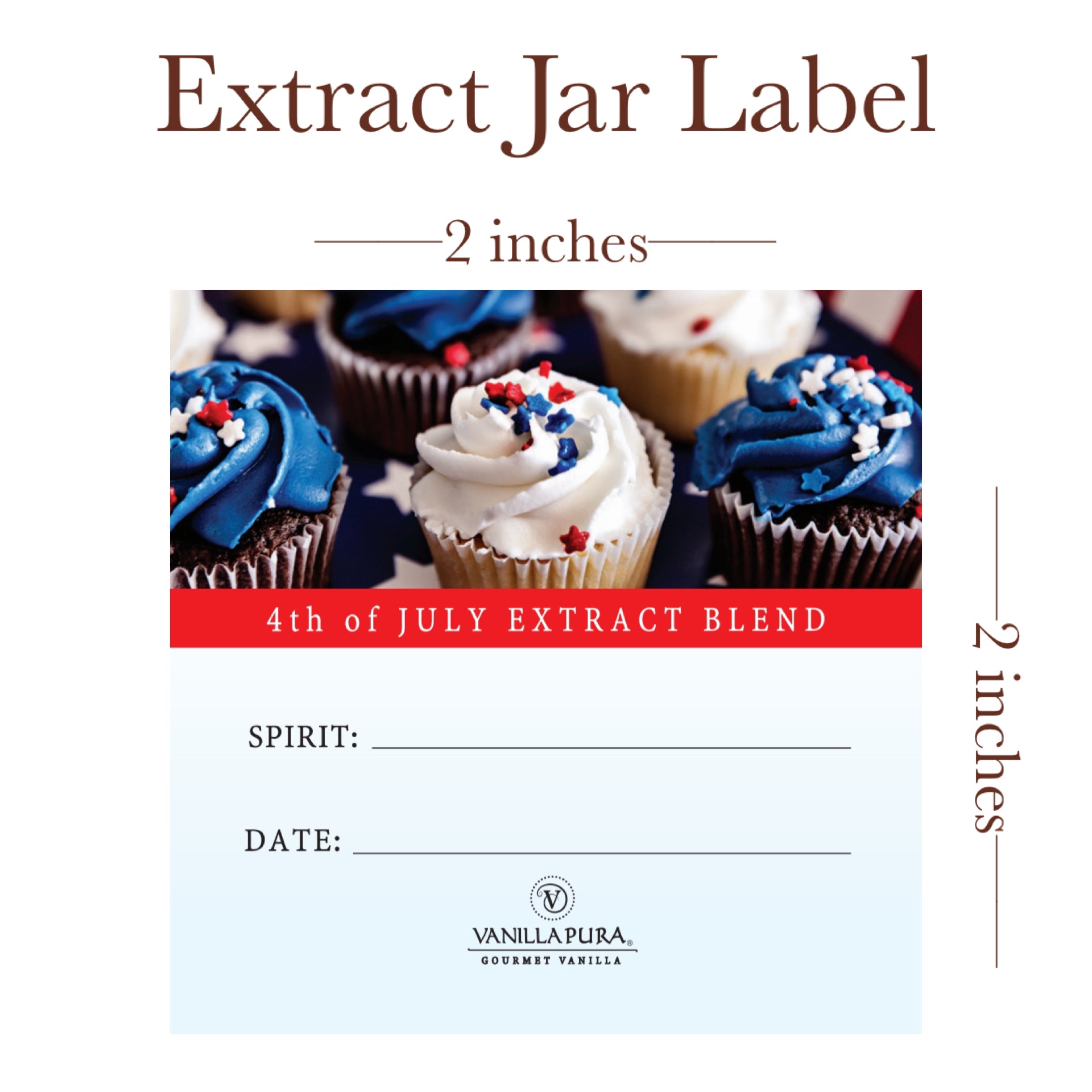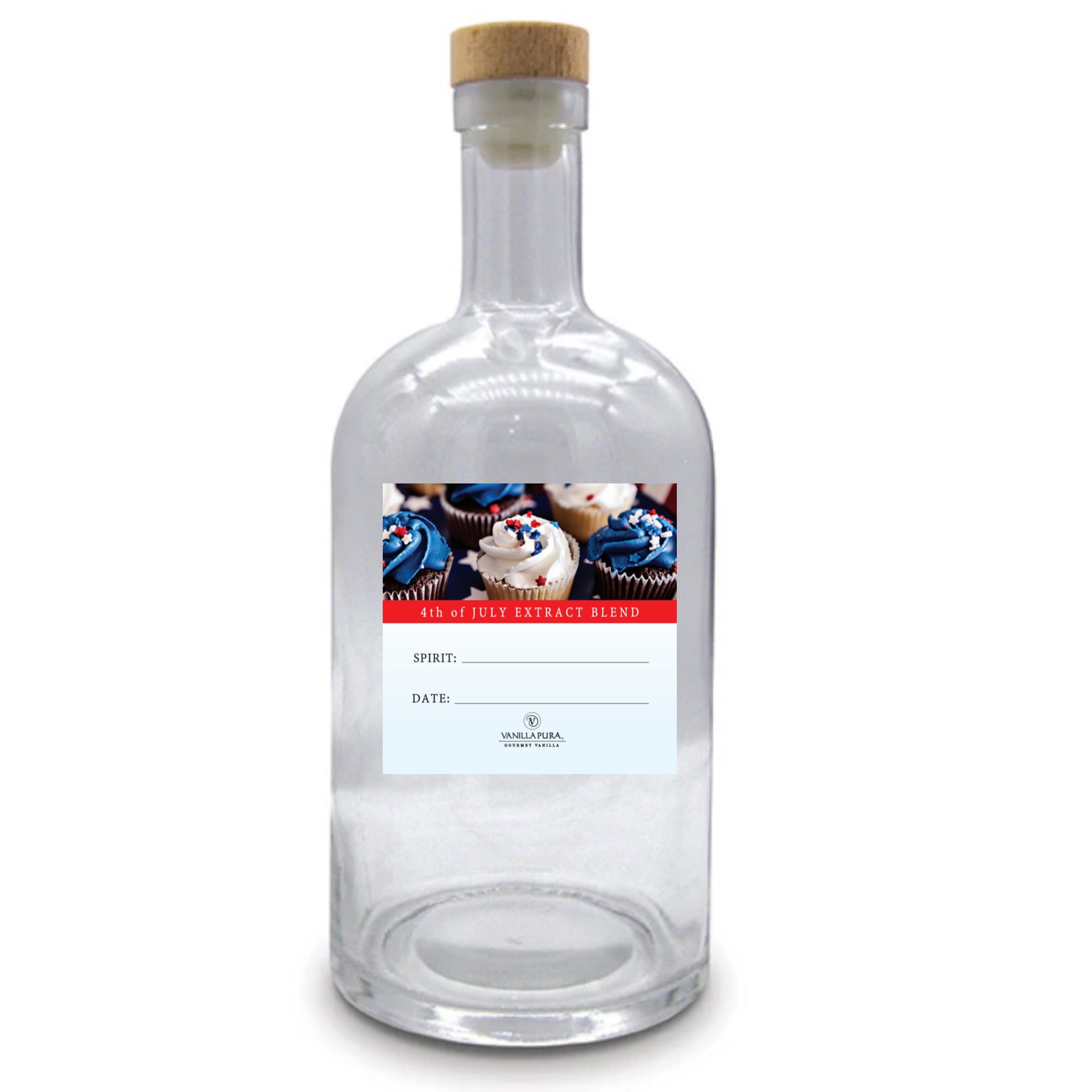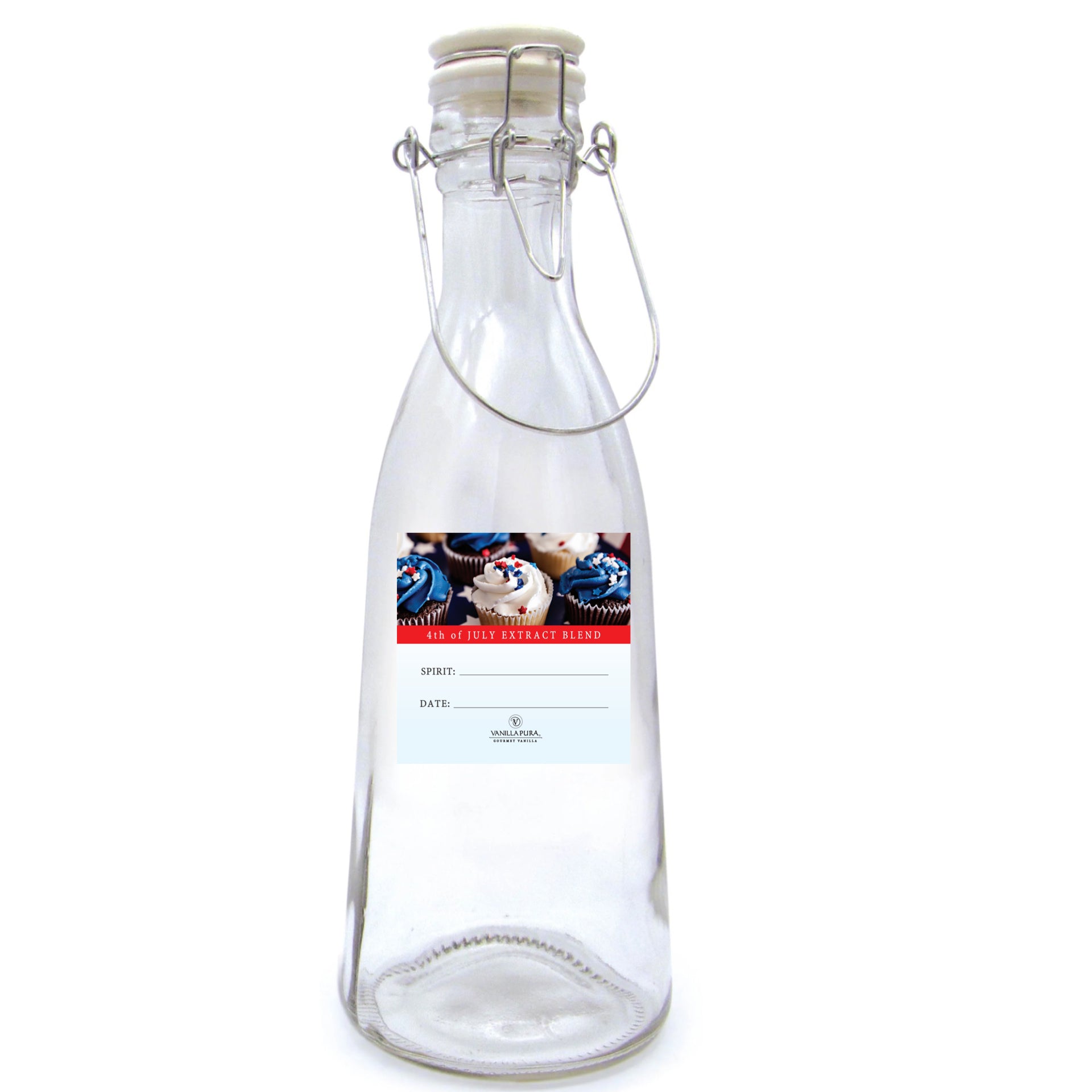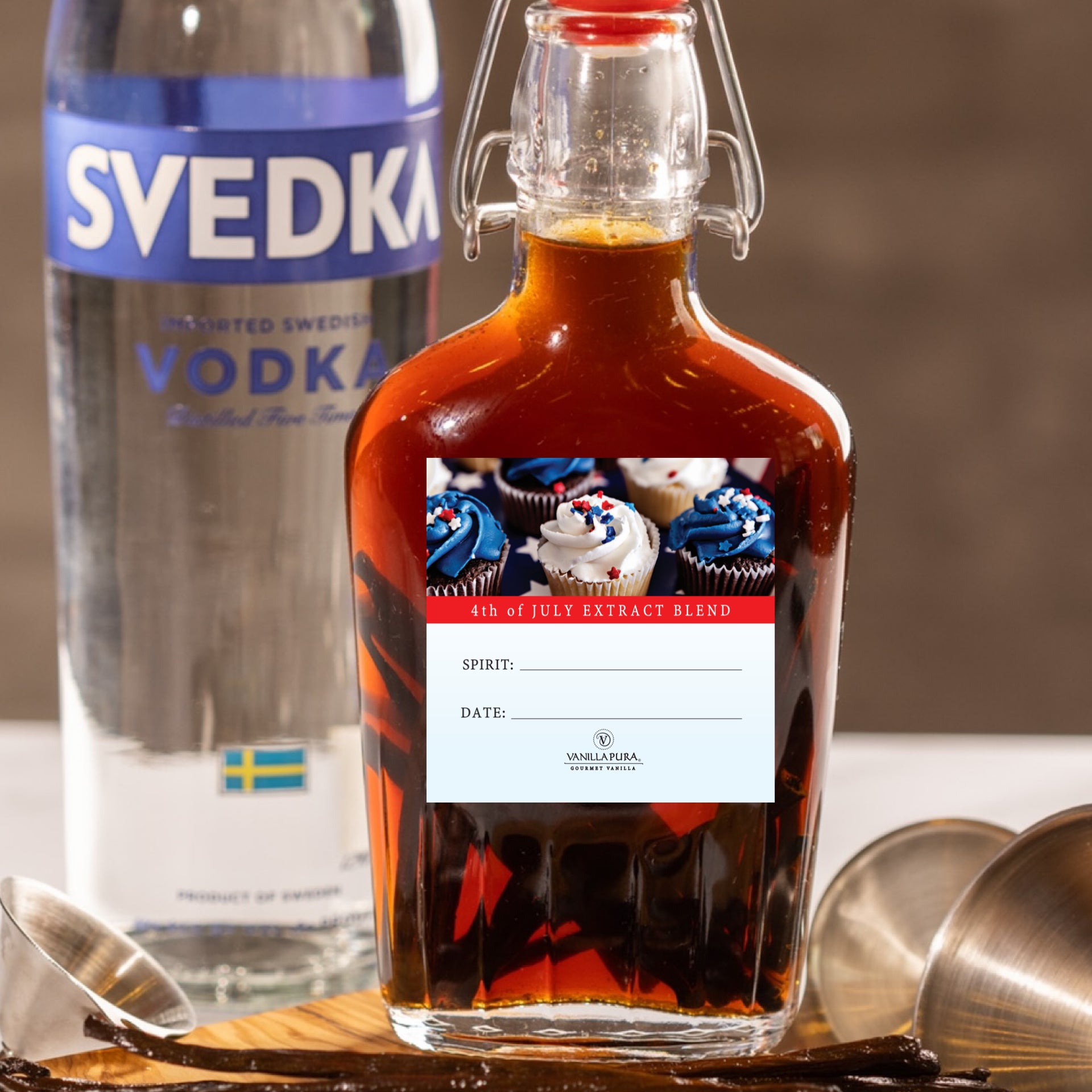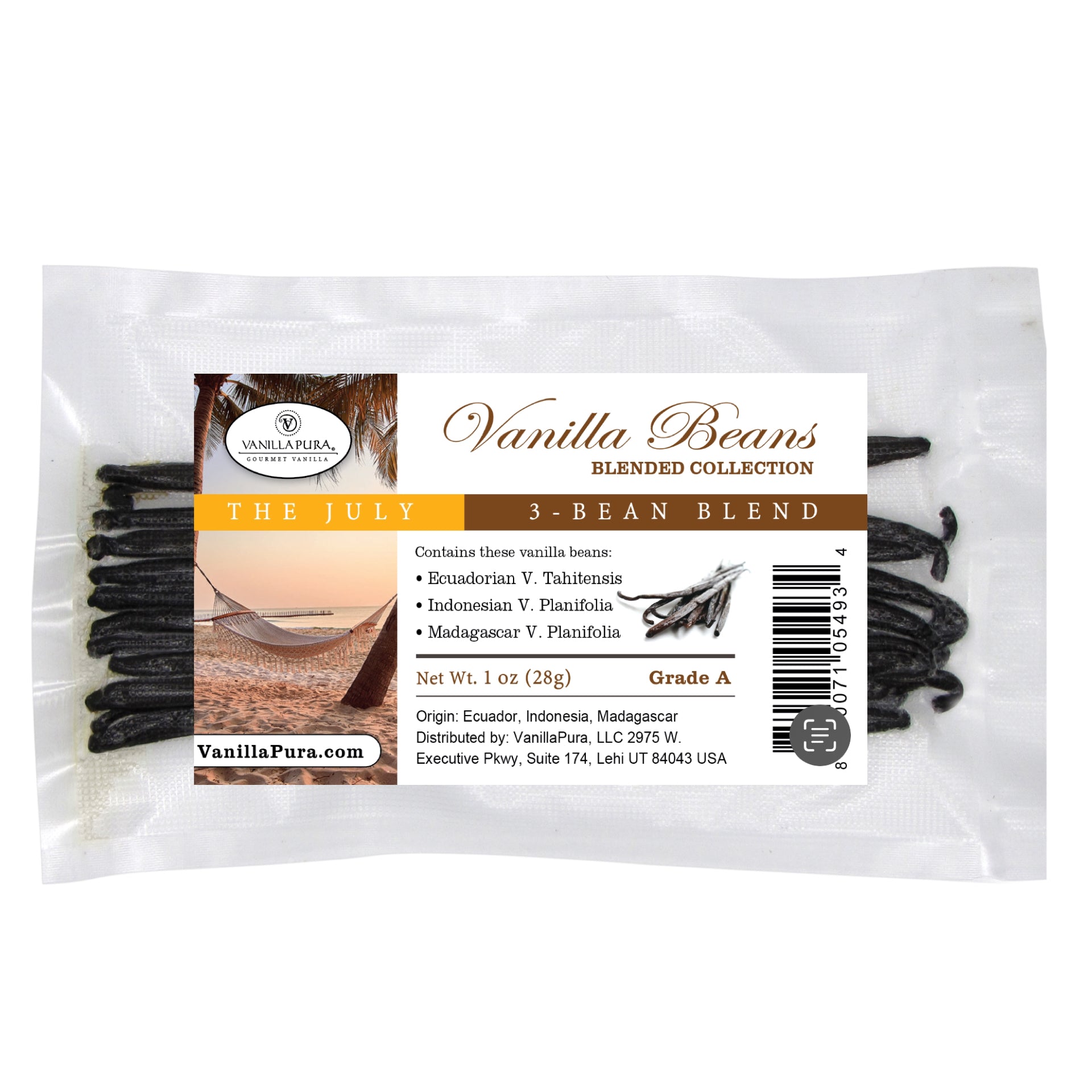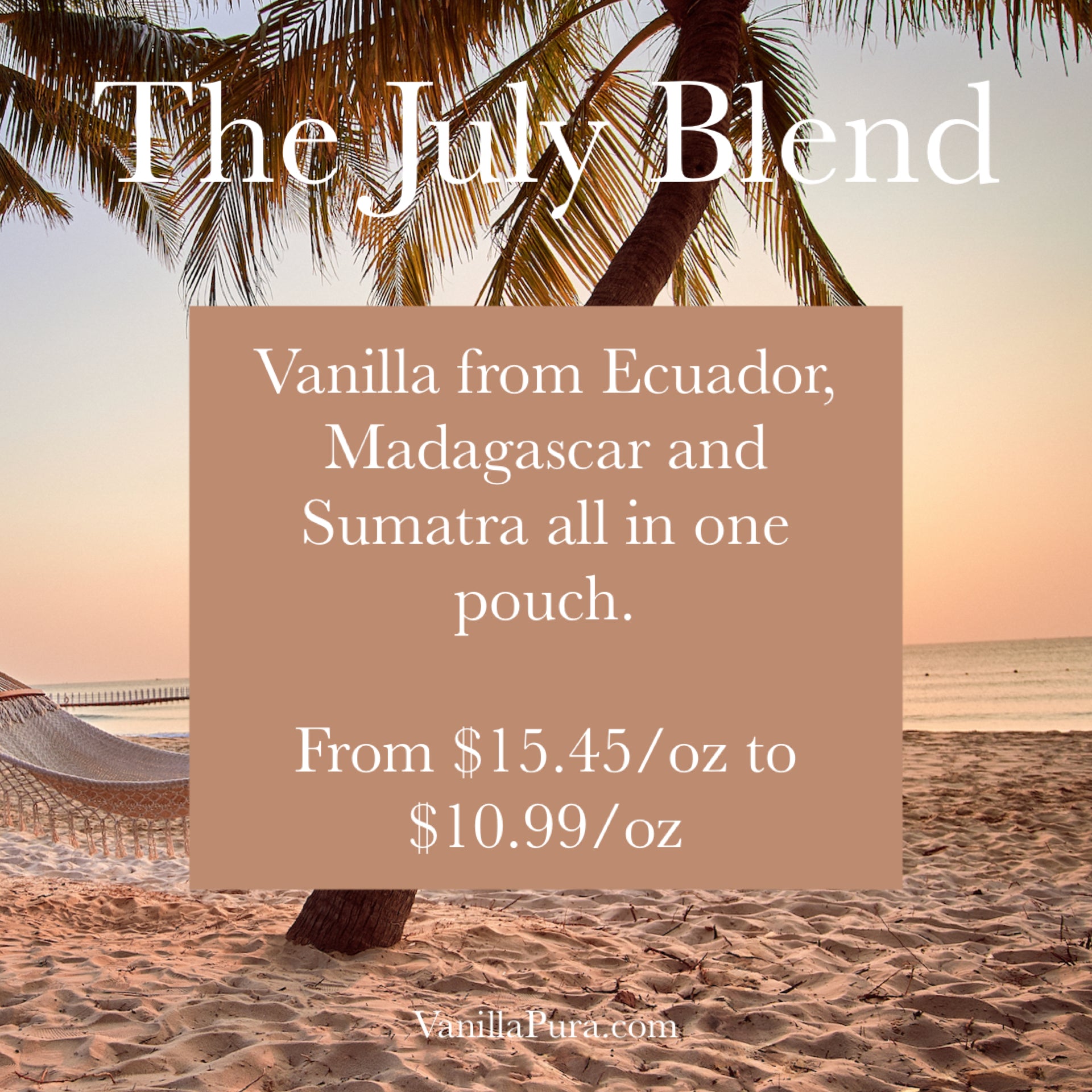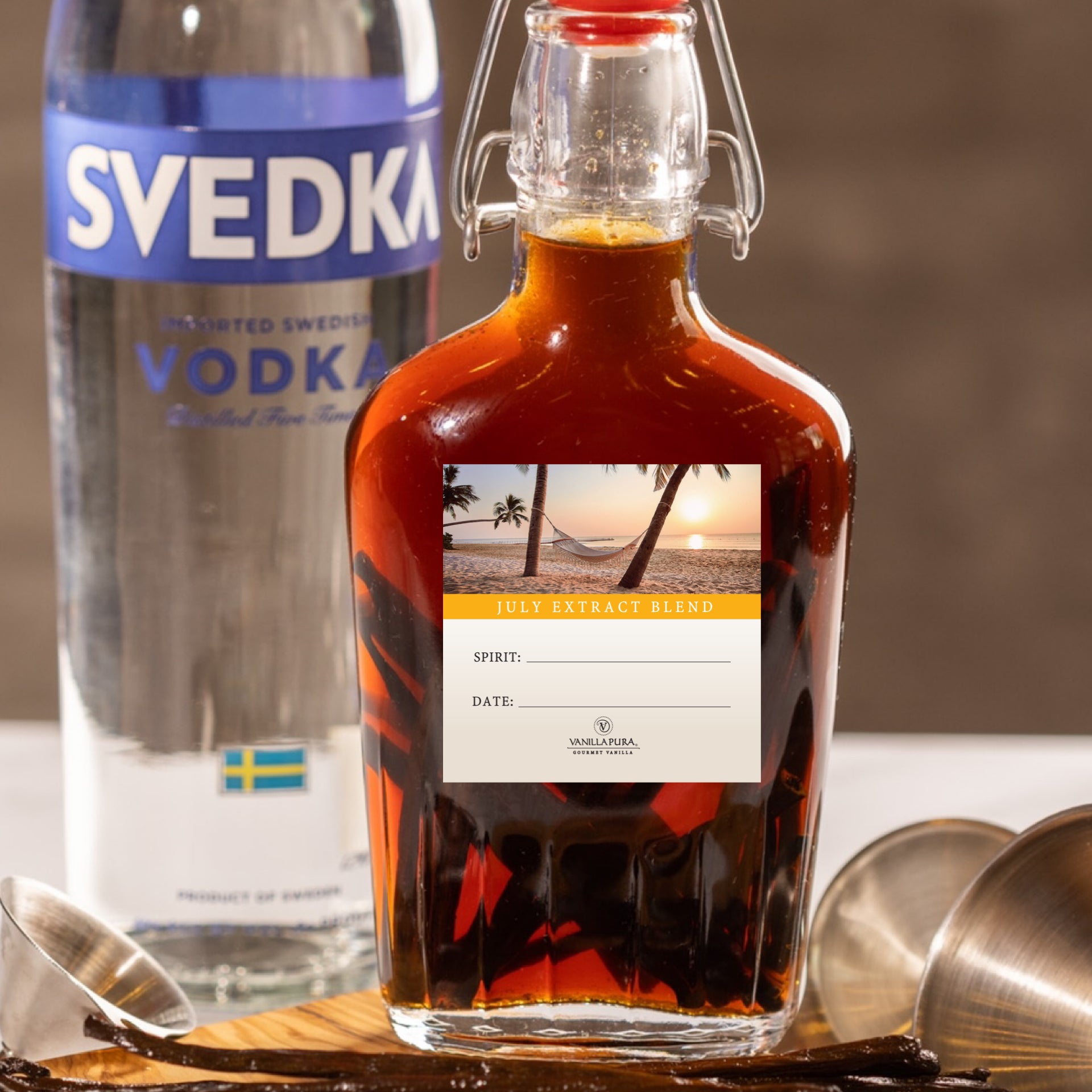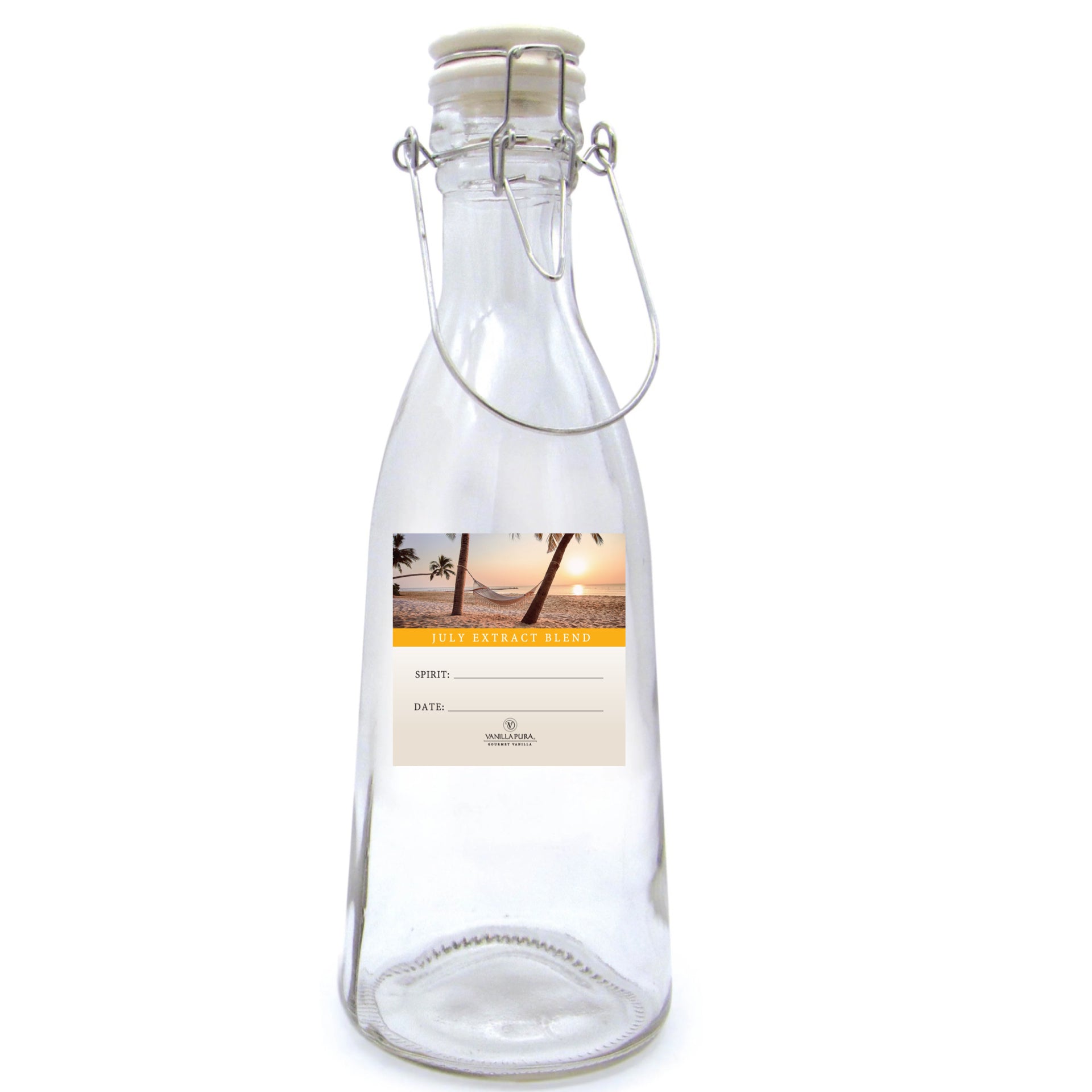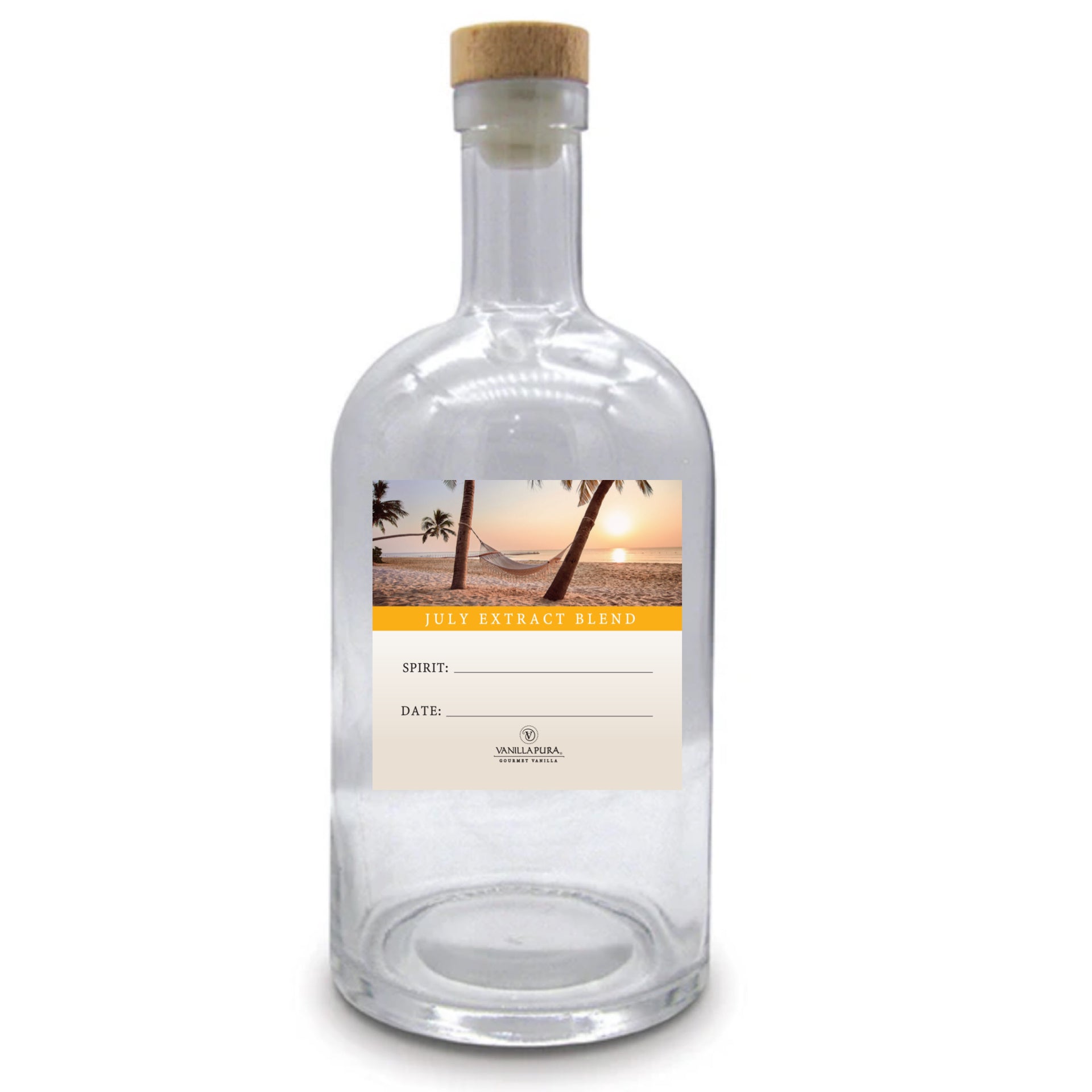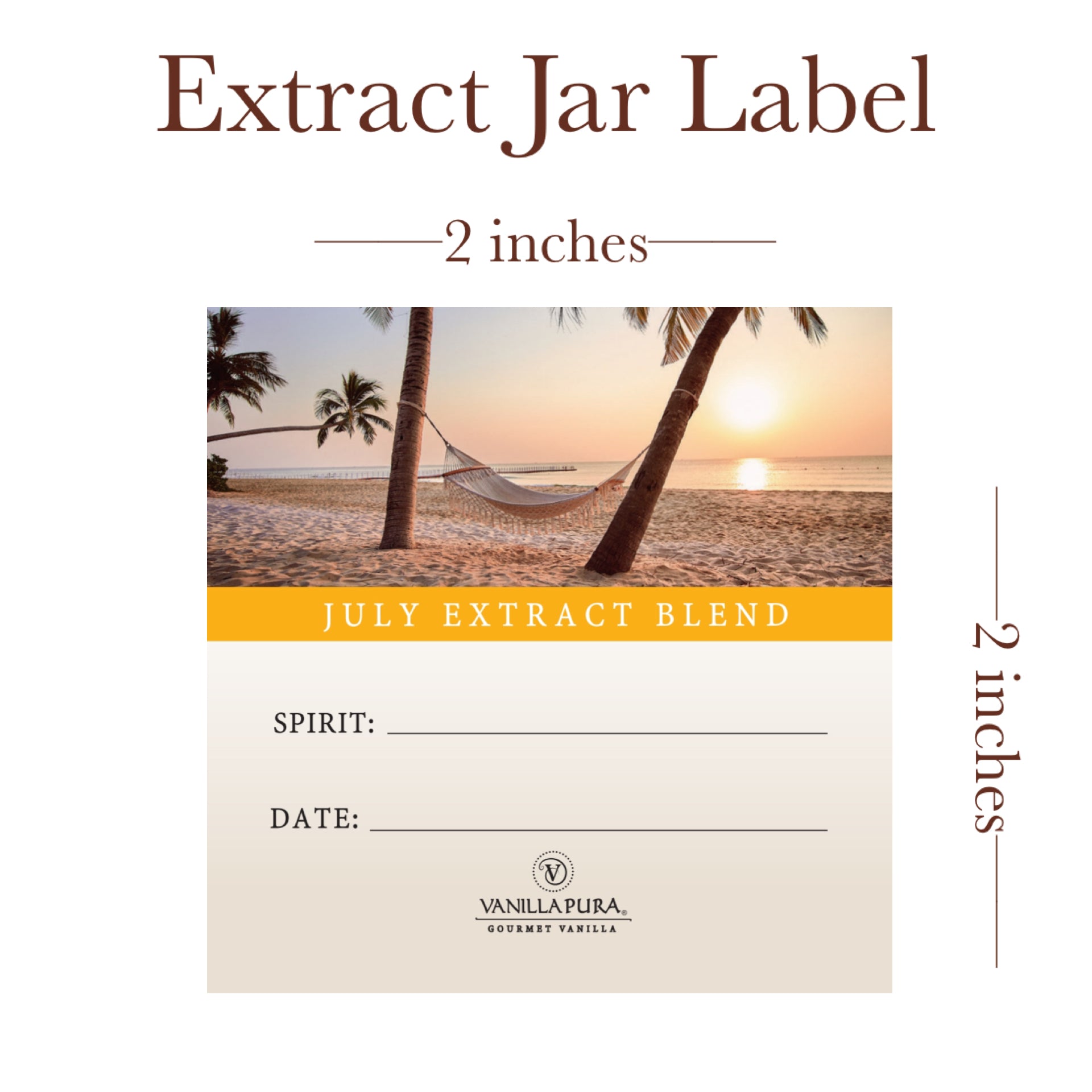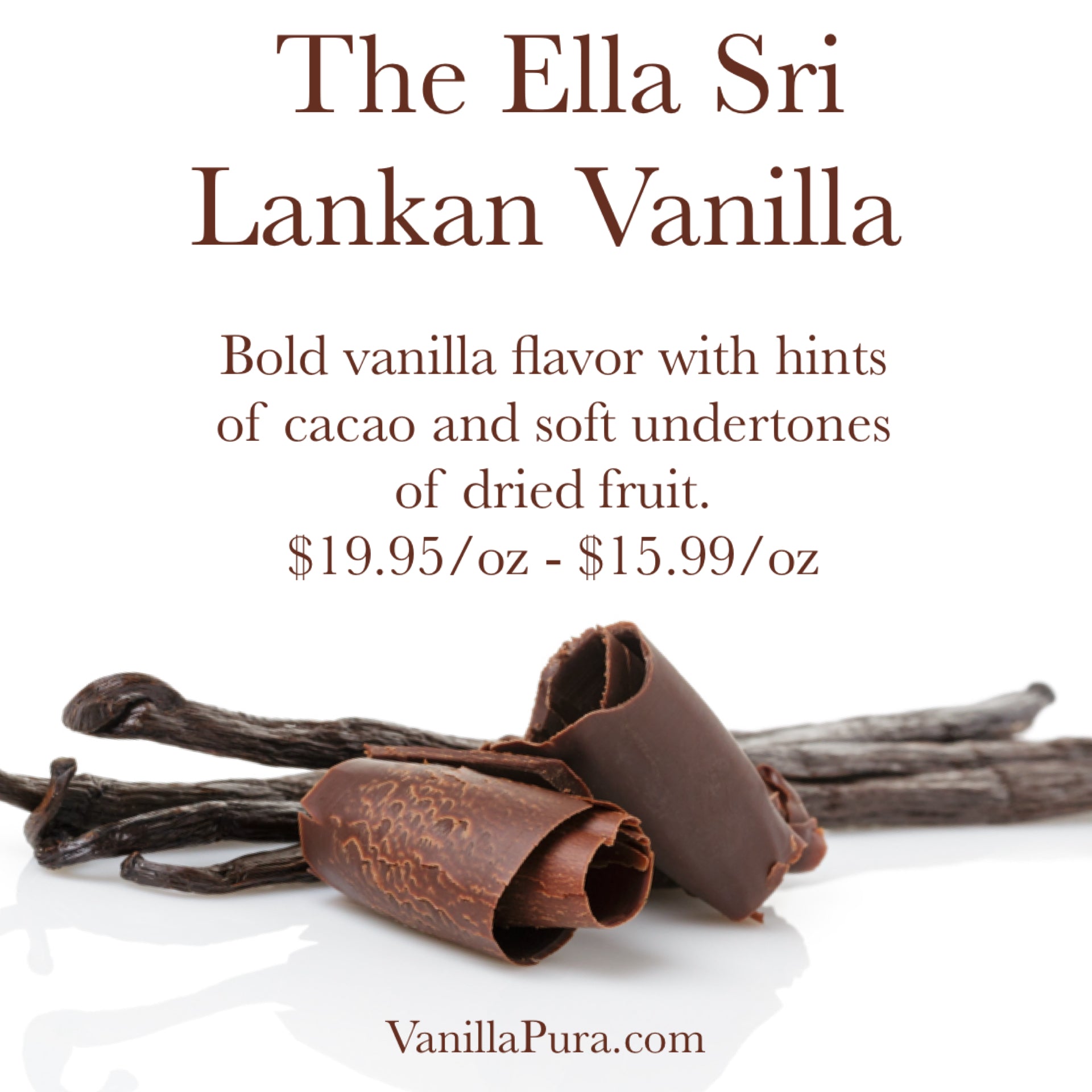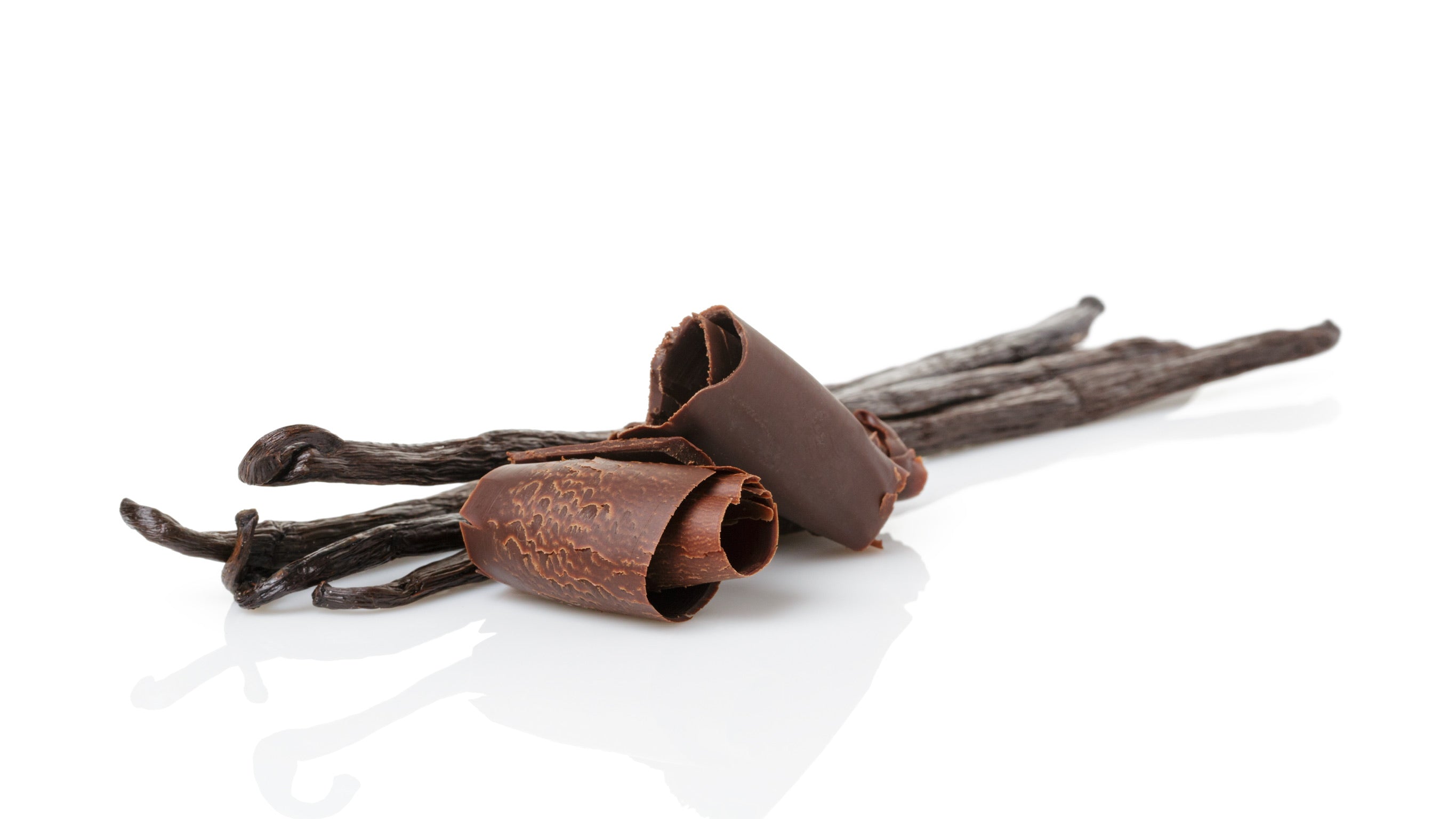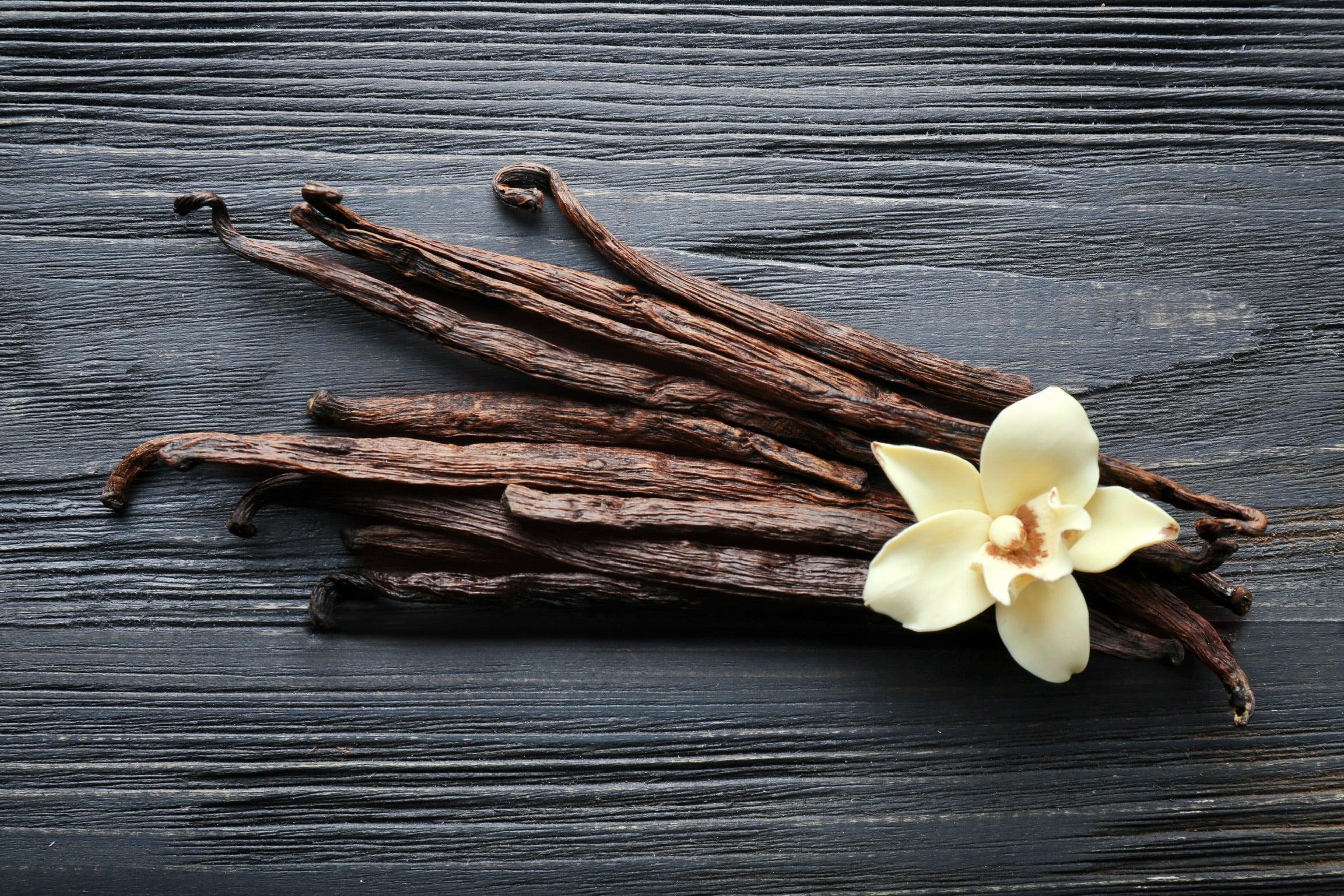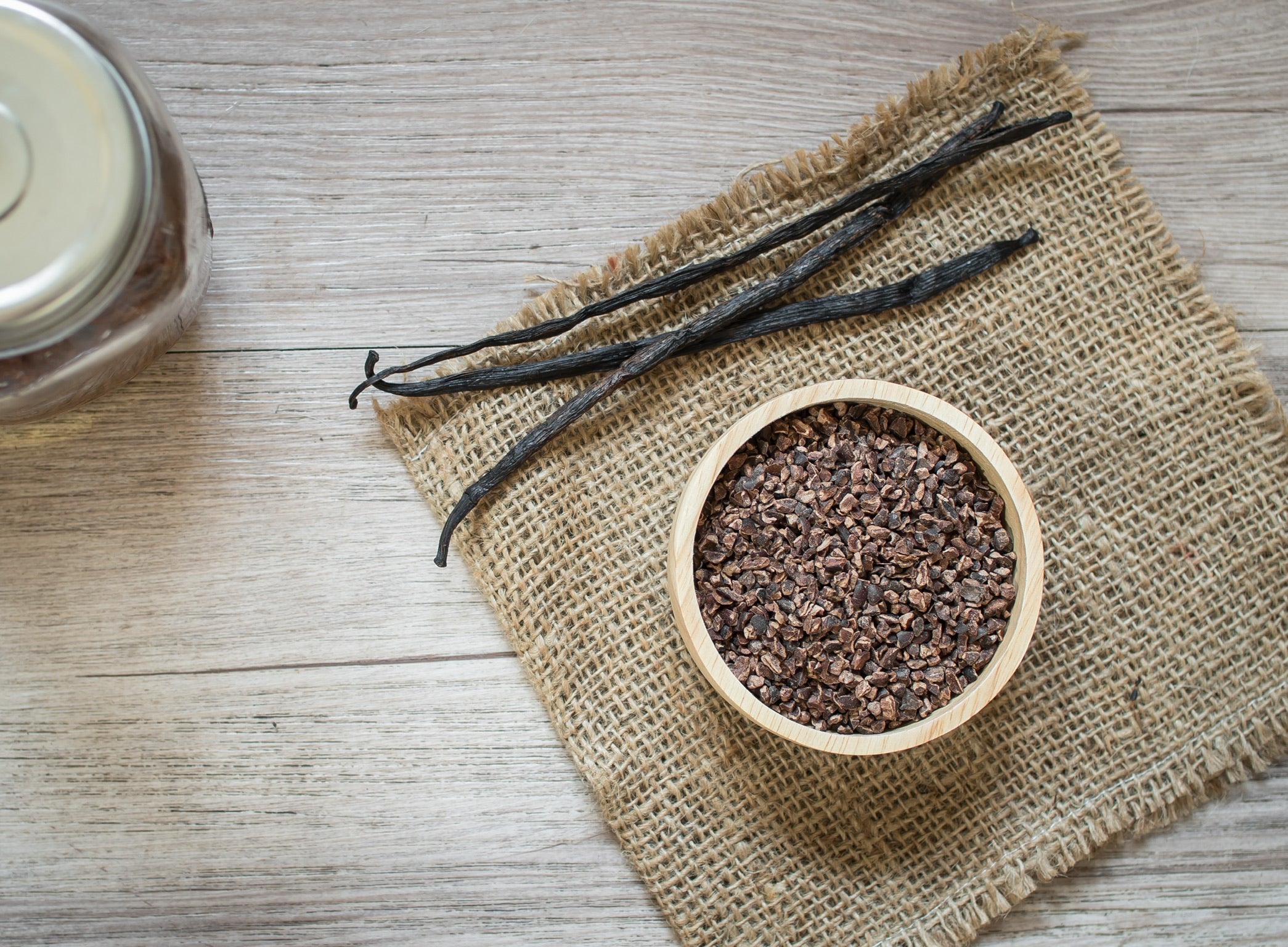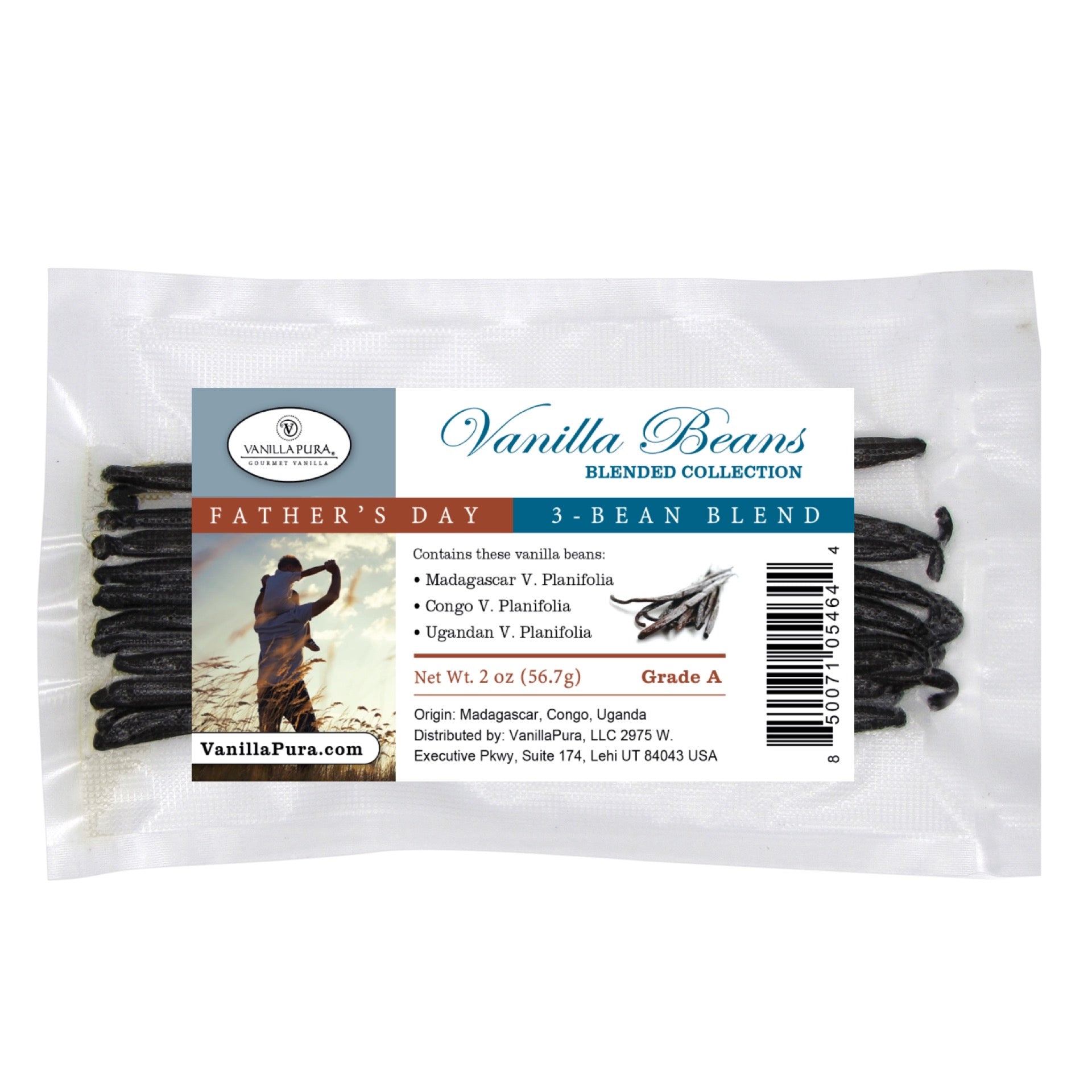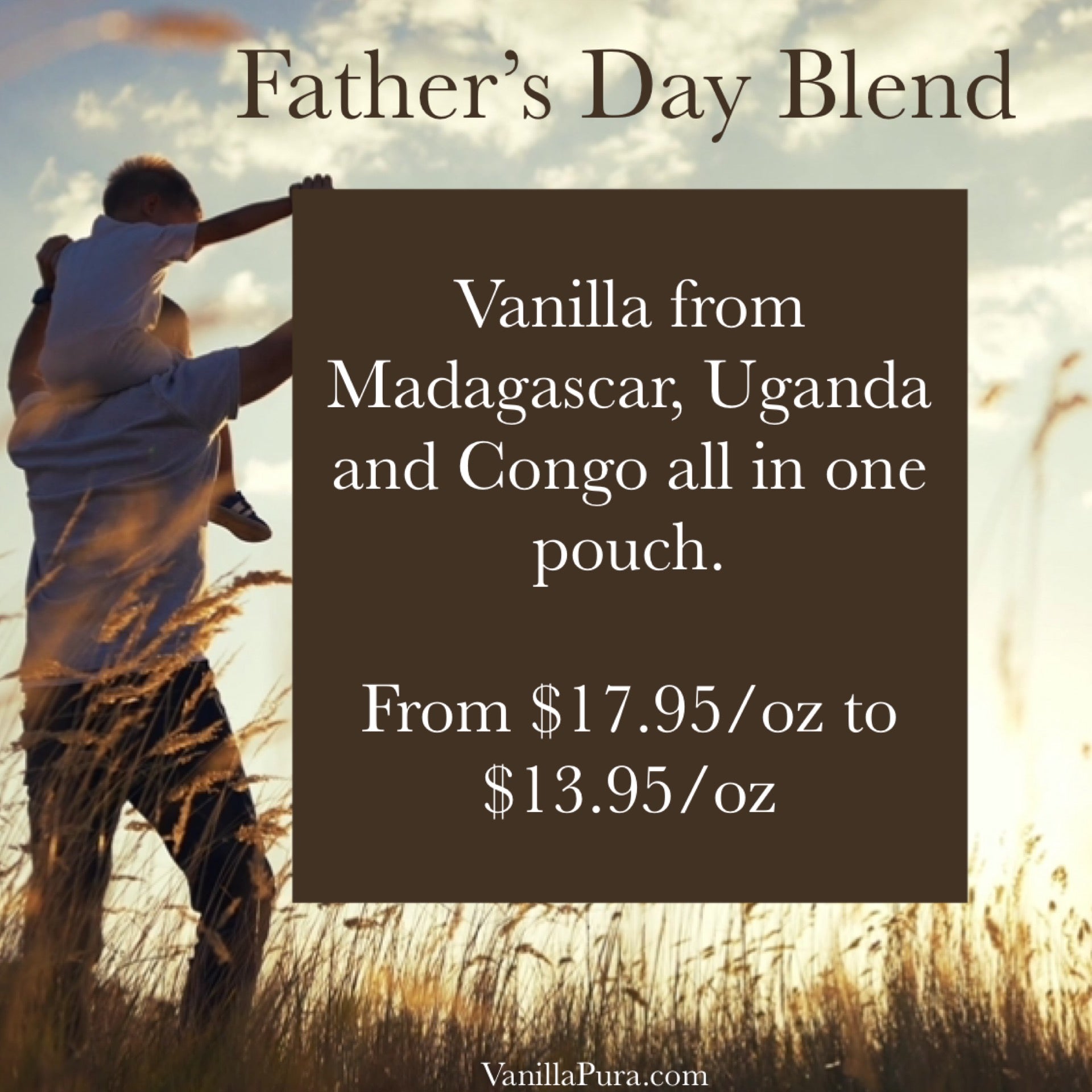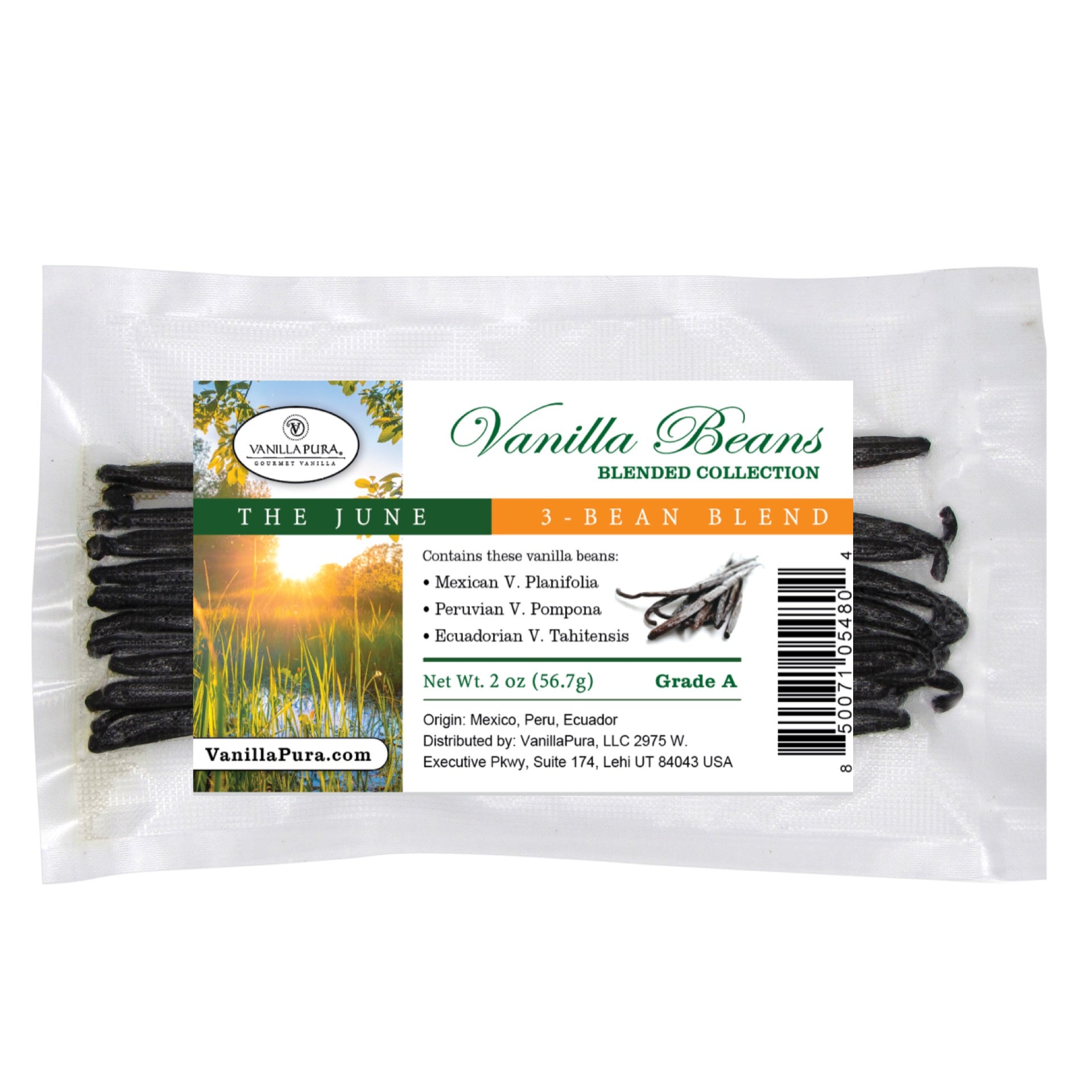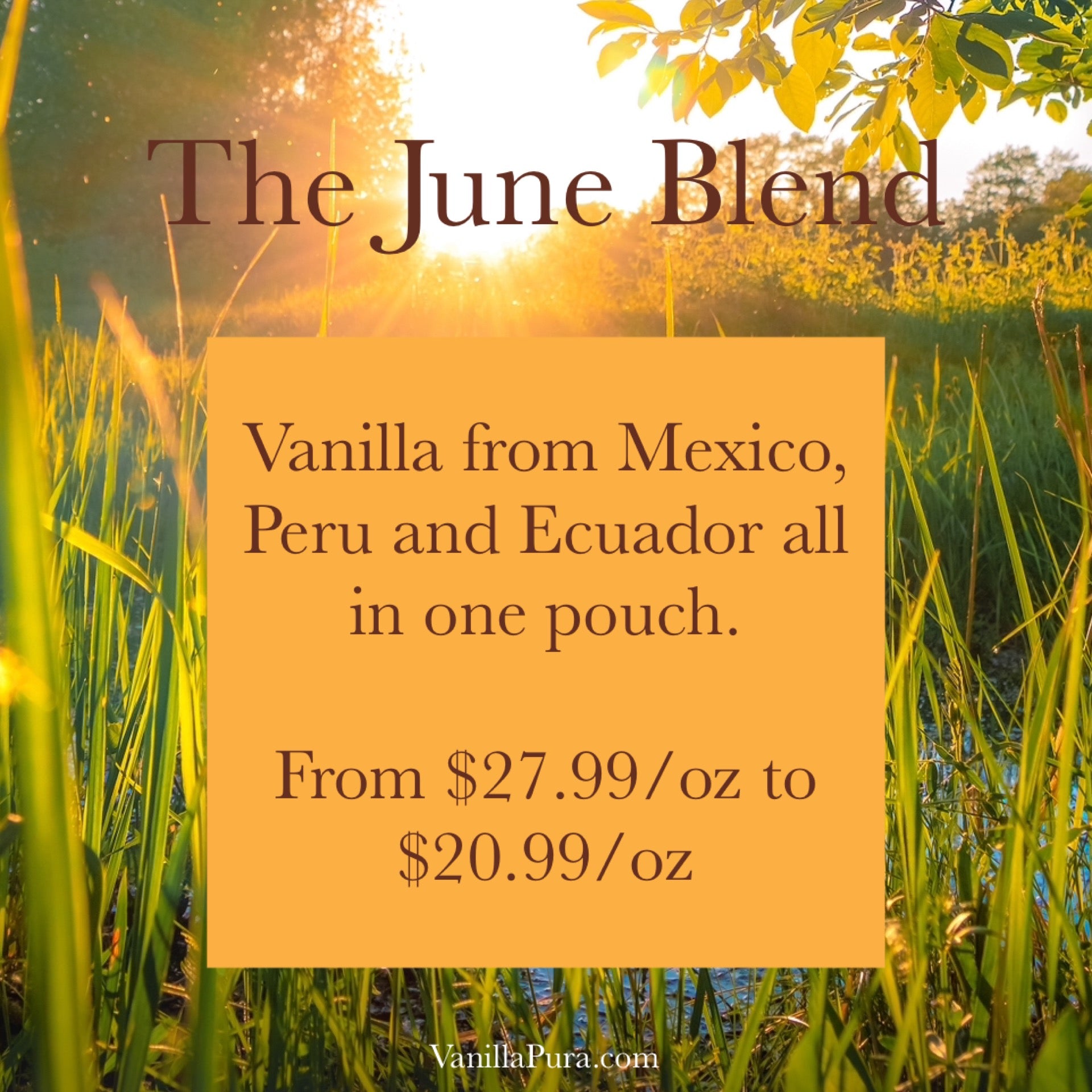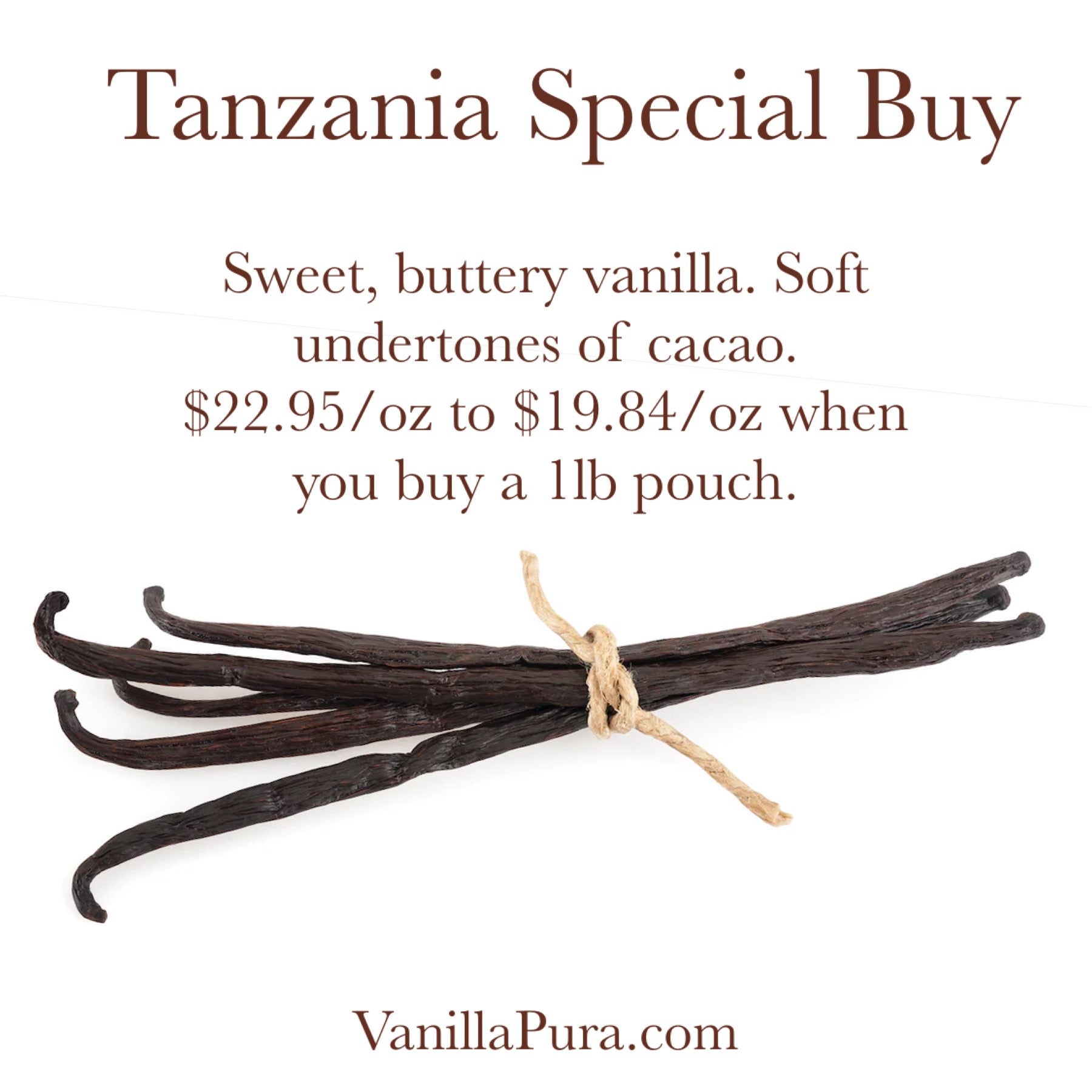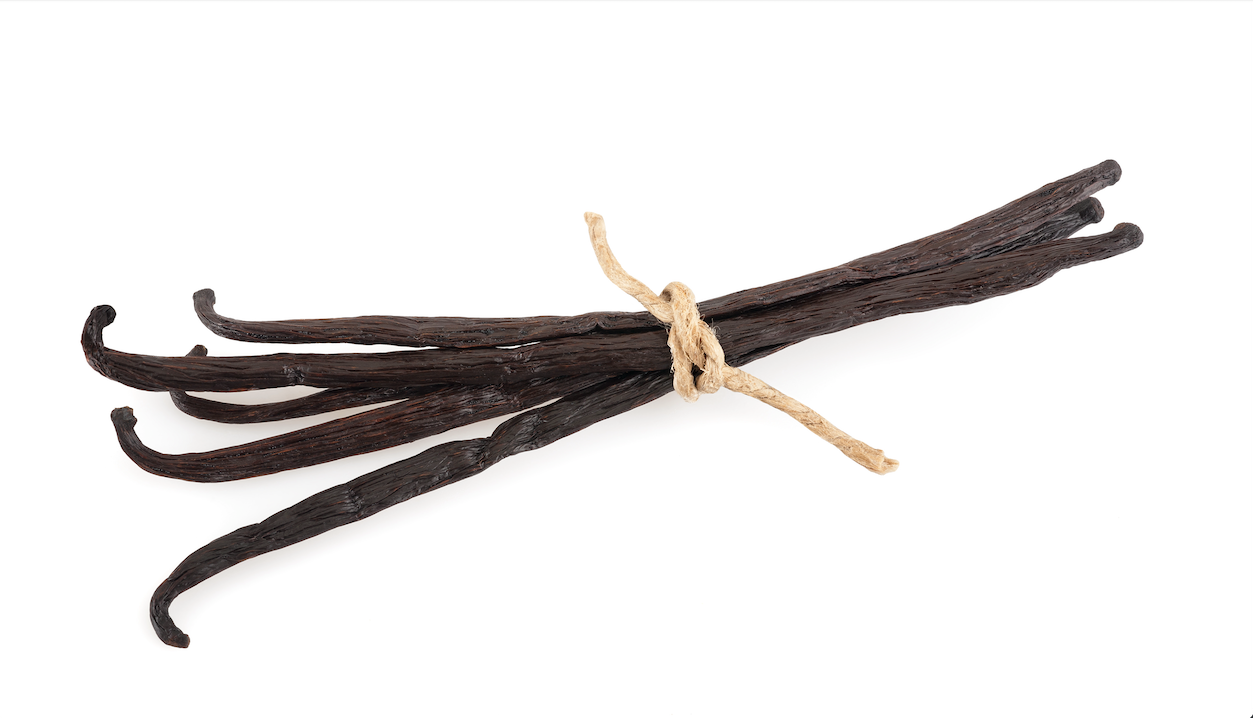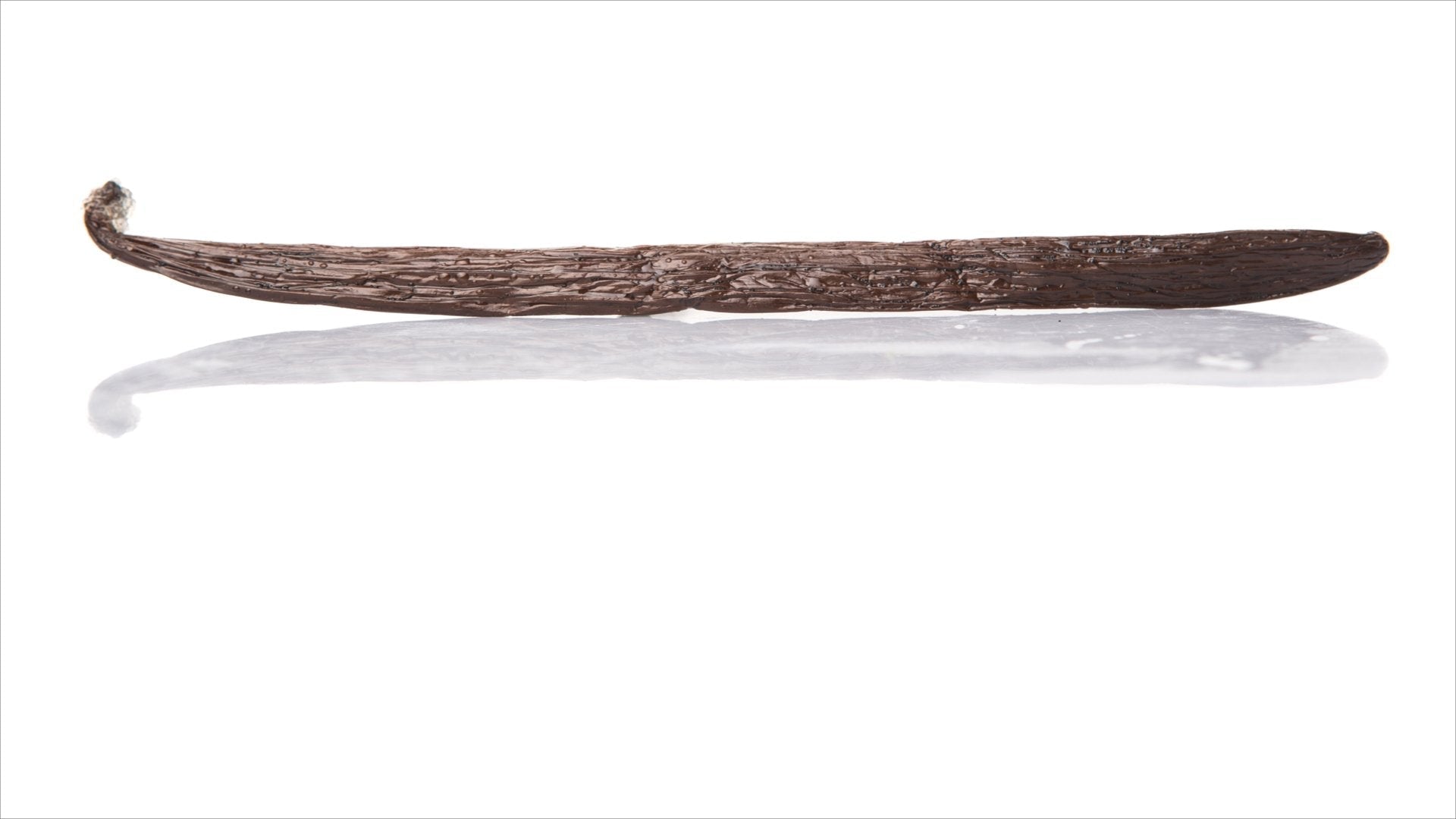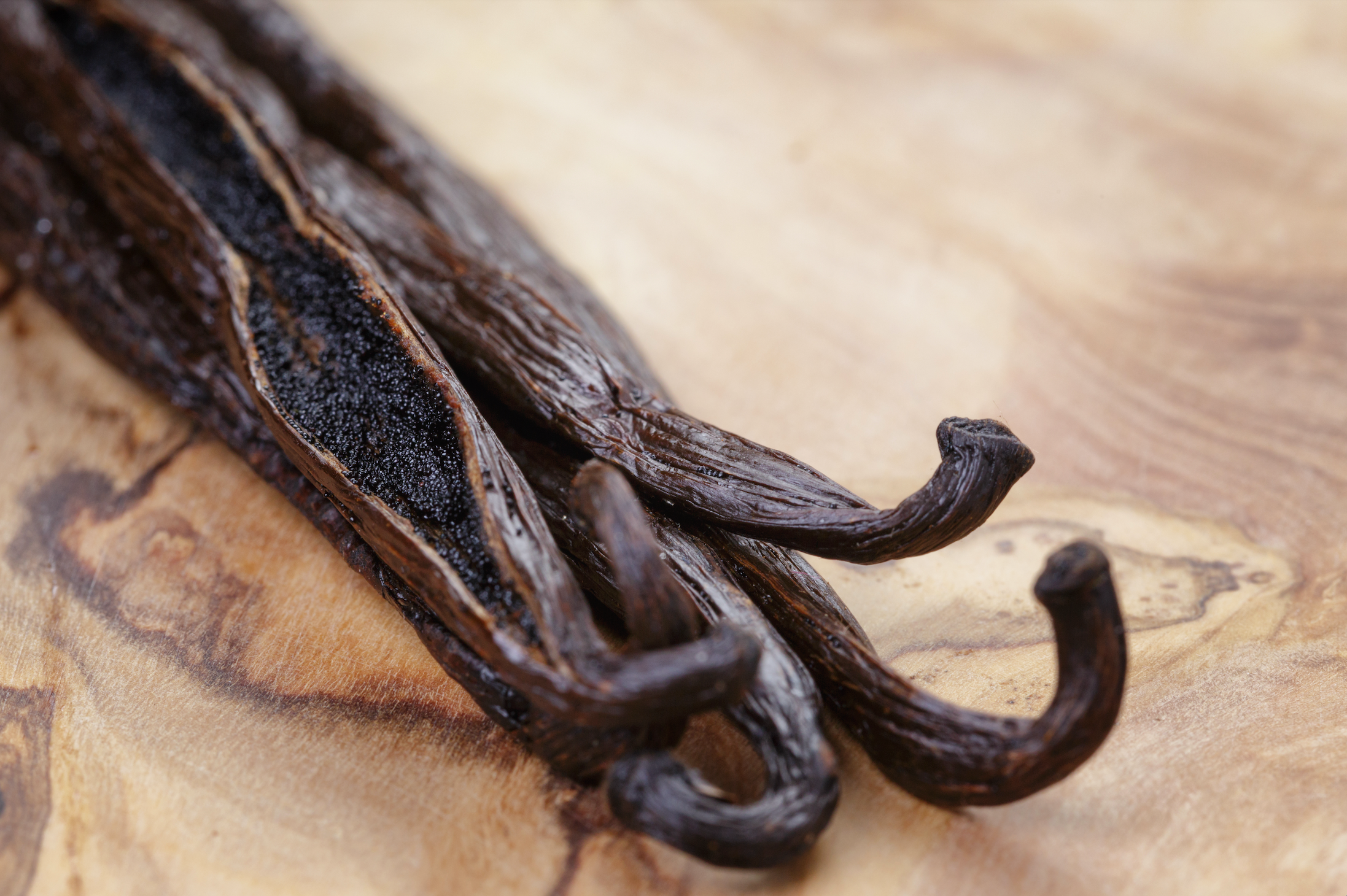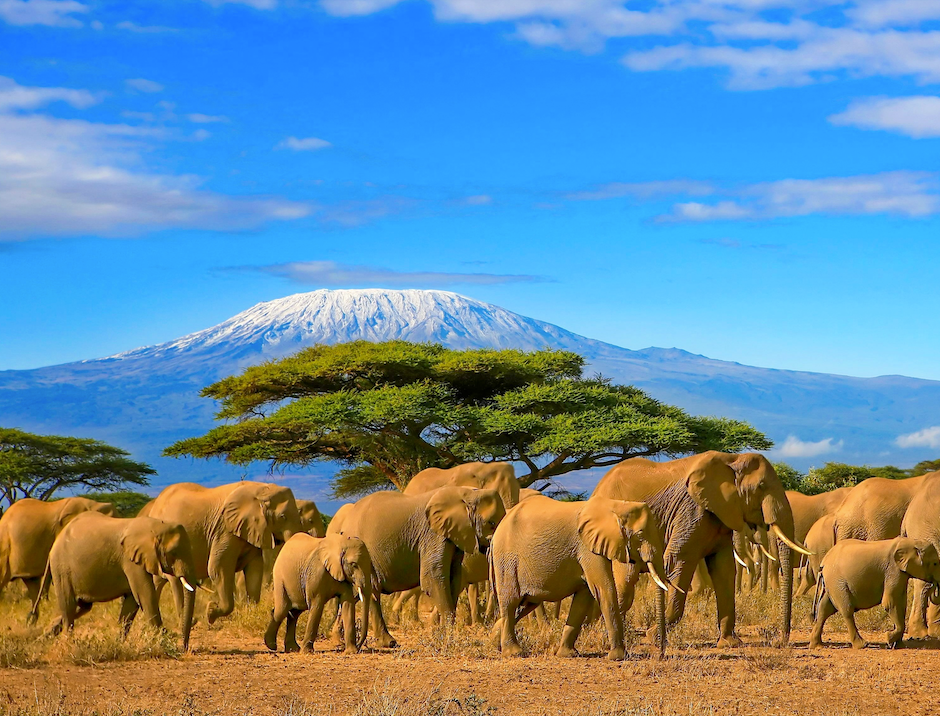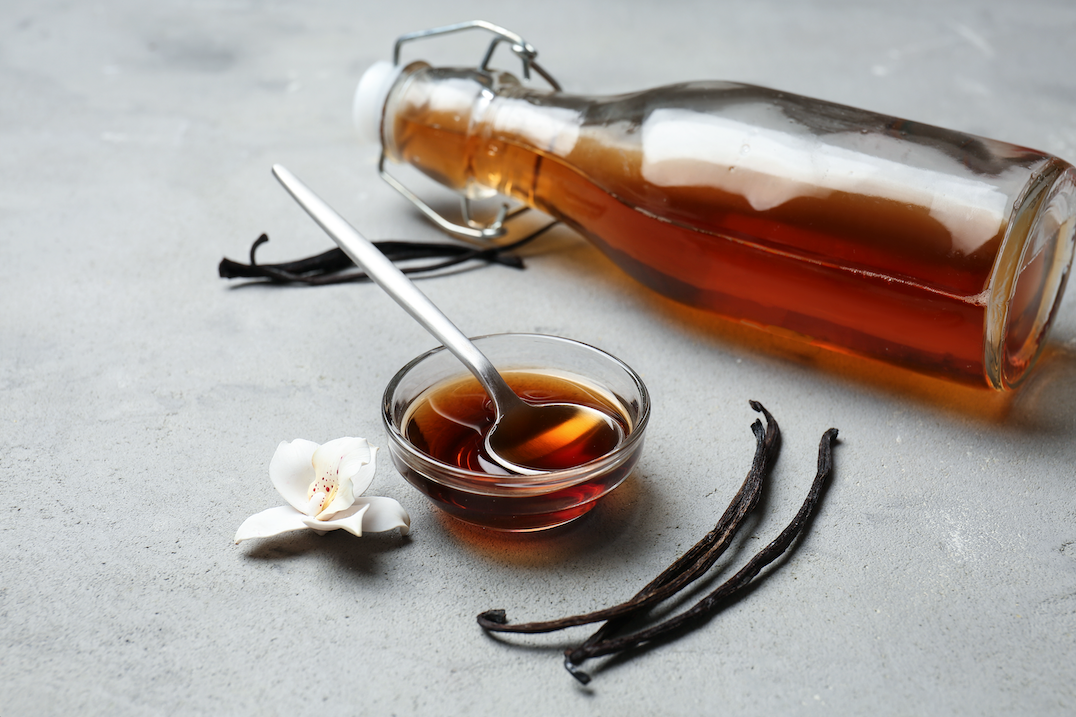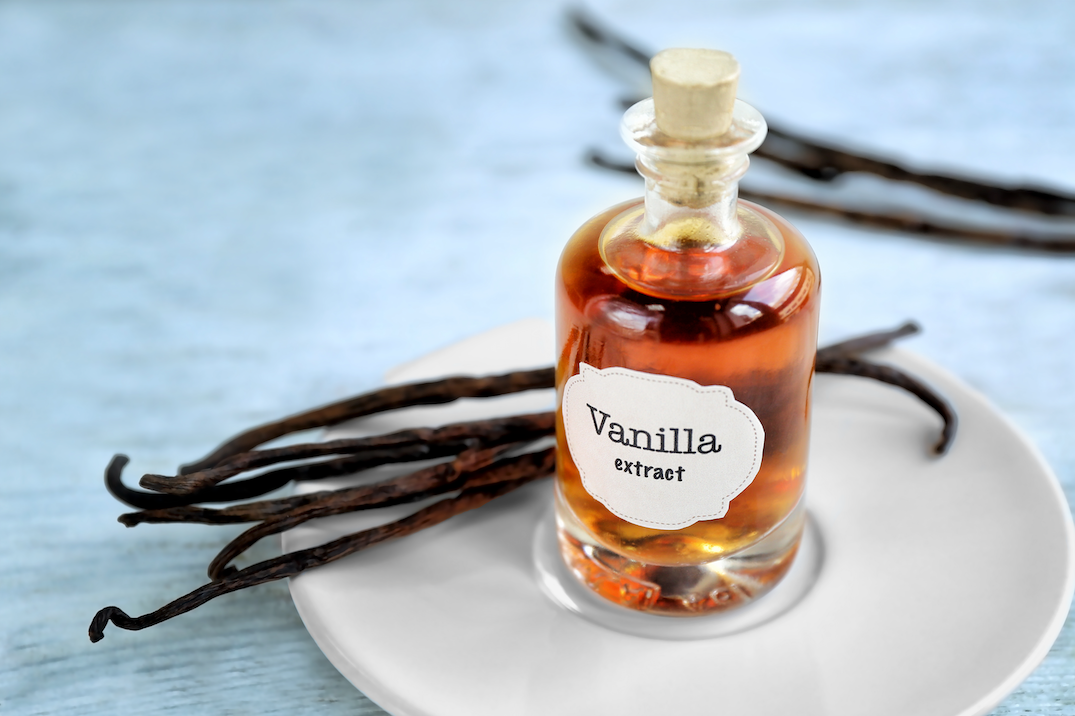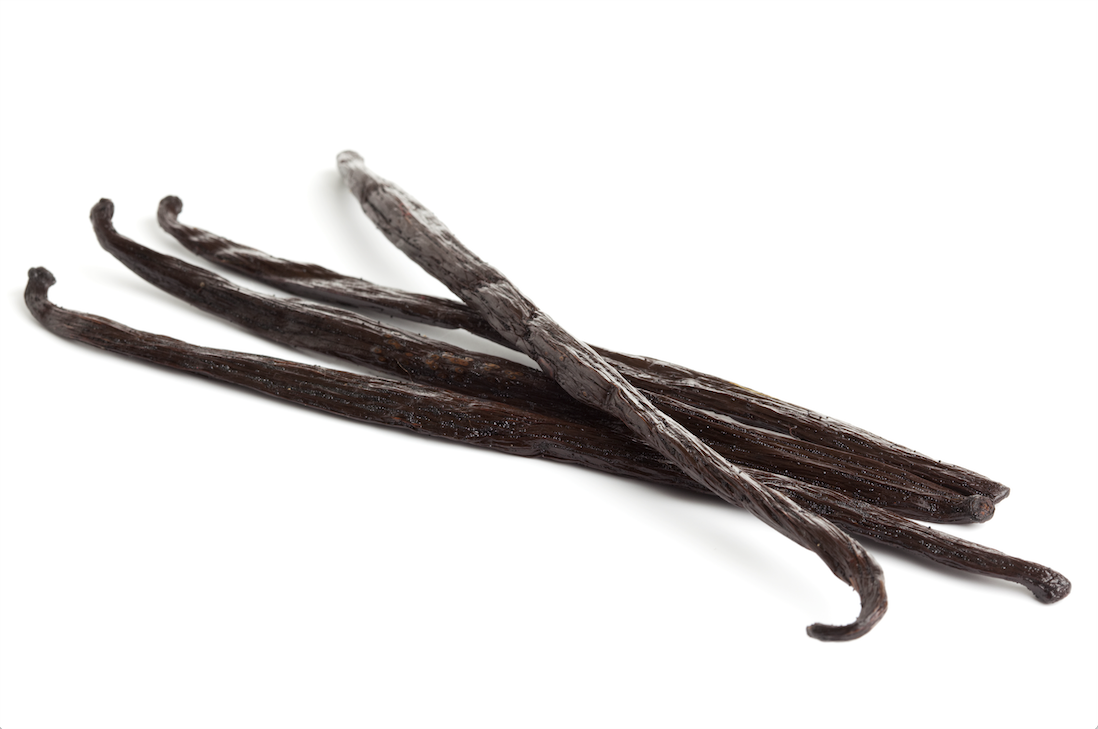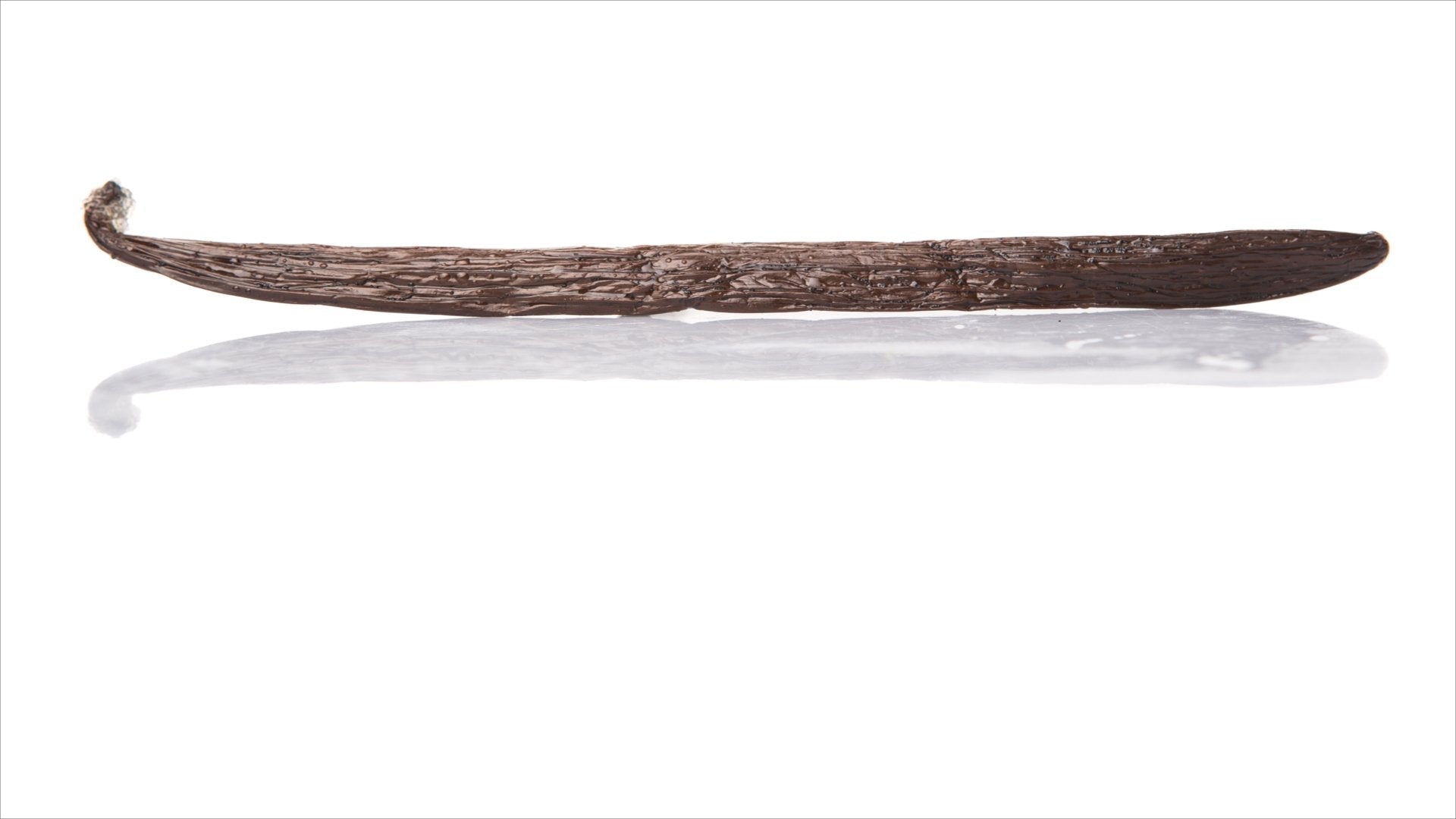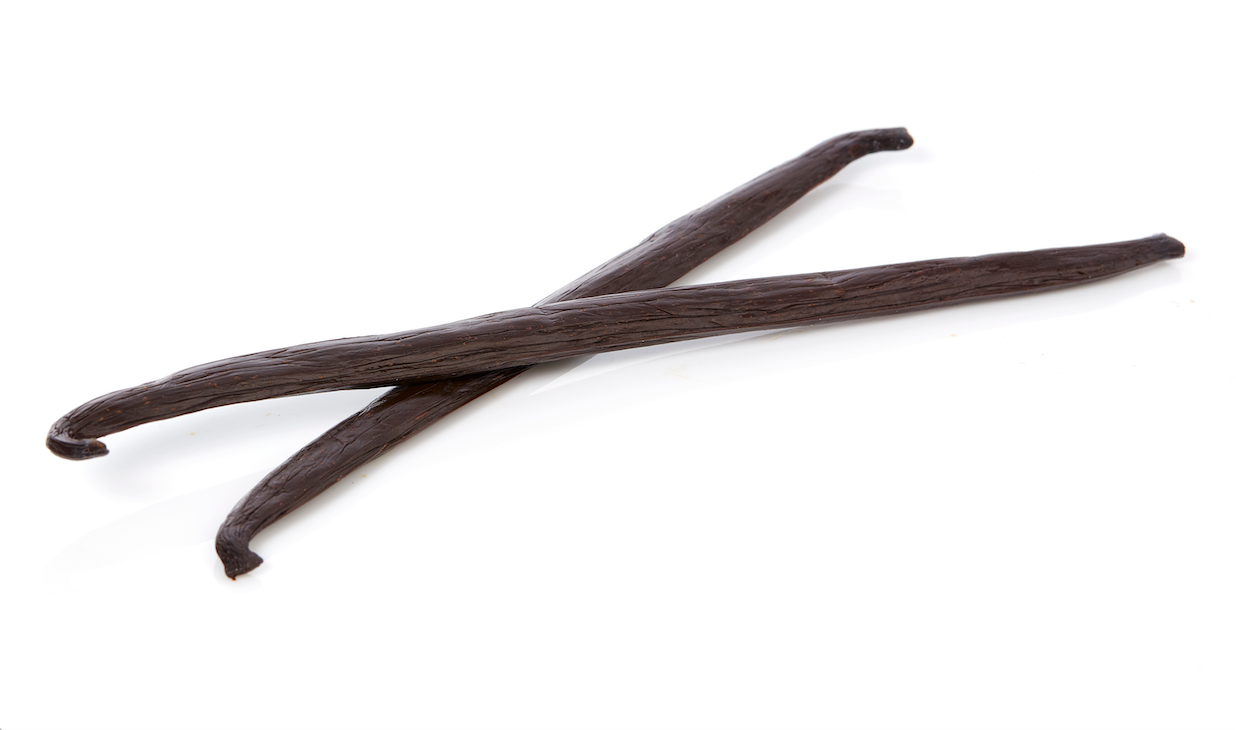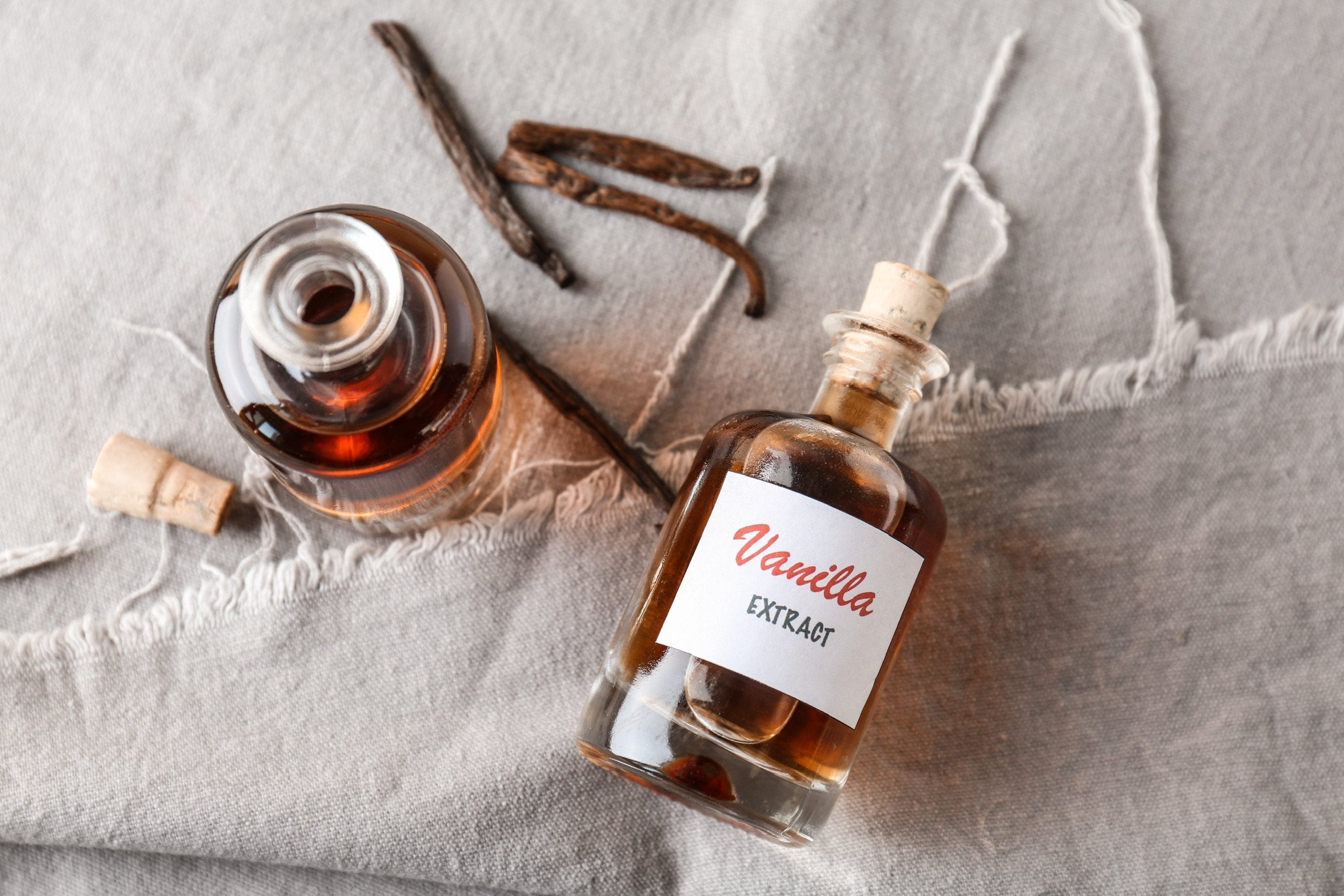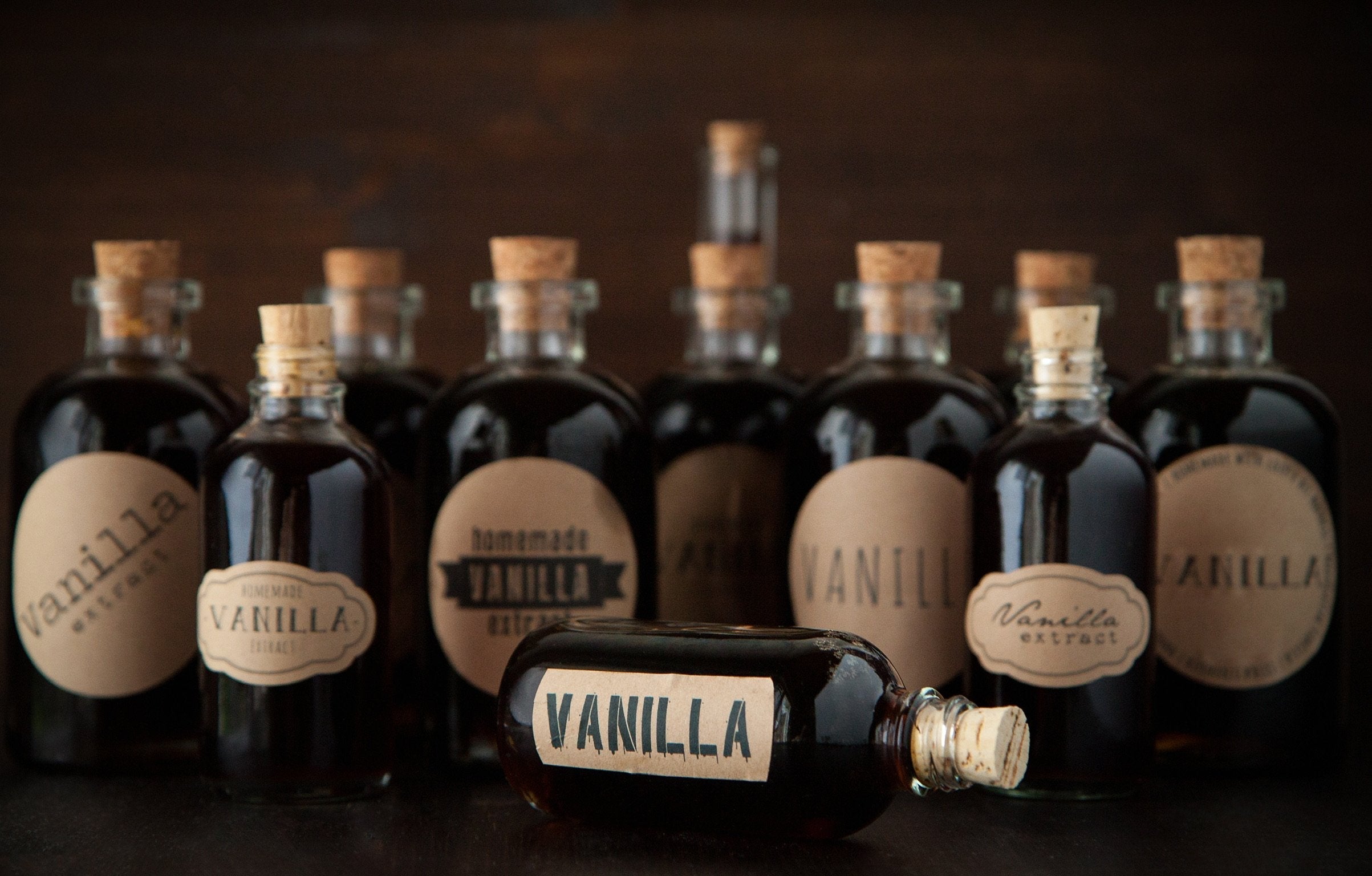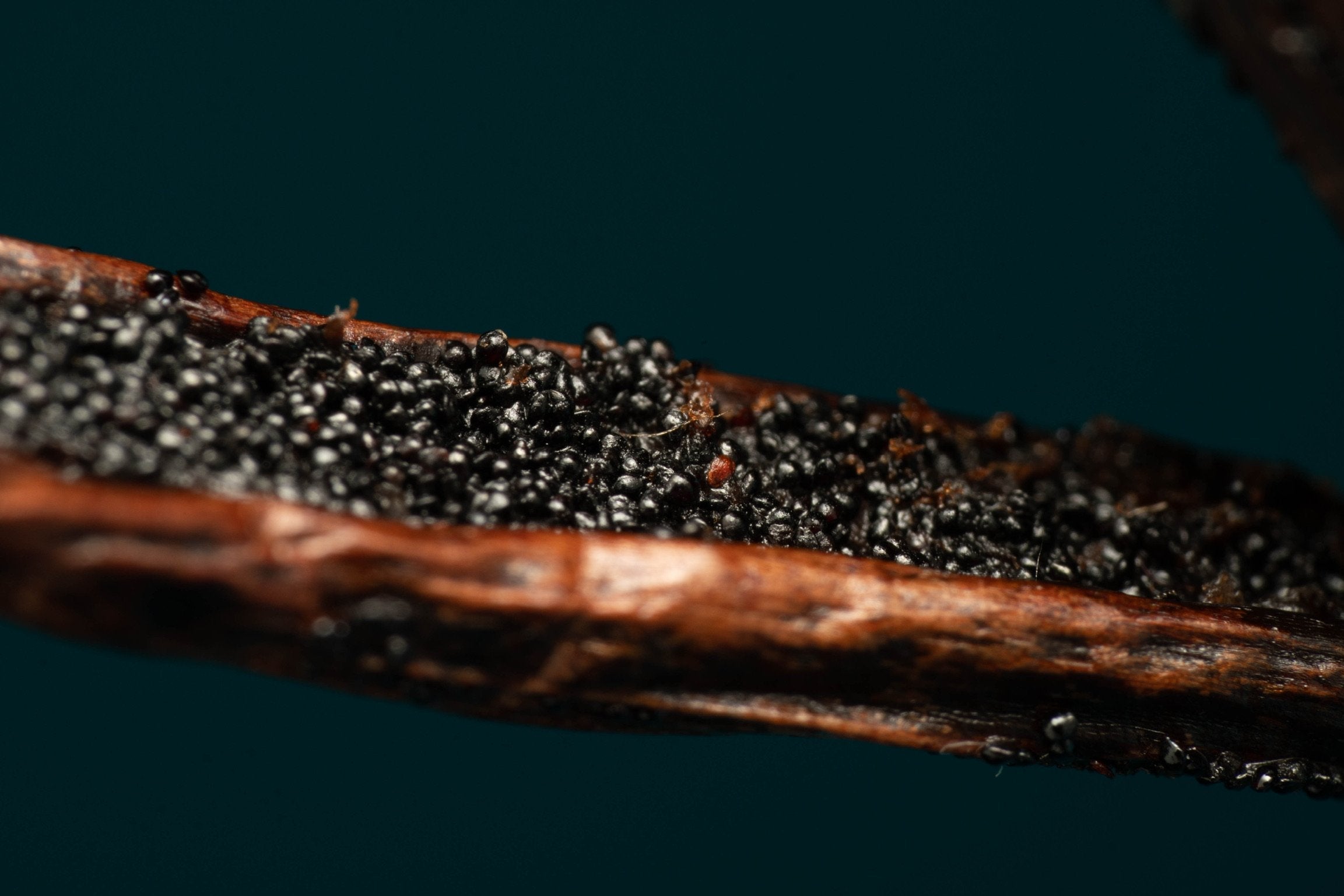What is Pure Vanilla Extract?
Pure vanilla extract is derived from vanilla bean essential oils. How do you remove vanilla bean essential oils from a vanilla bean? By submersing it in minimum 35% (70 proof) alcohol.
Order The Art of Extract Making. The first professionally published extract-making book of its kind.
Look at the vanilla extract in your cupboard. If it doesn't say "Pure", then you are not getting a real vanilla bean experience and you are likely consuming artificial and synthetic ingredients.
If your vanilla extract says "Pure" but contains more than two ingredients (vanilla beans & spirits), then you are getting a watered-down, sugar-infused and corn-syrup heavy vanilla. If your "Pure" vanilla extract is black, then it could be highly-diluted with caramel colors and stabilizers. Real vanilla extract isn't black. It's amber.
If you want sugar in your dish, then add sugar...don't hide it in your vanilla. If you want vanilla extract, then don't dilute the taste with sugar and corn syrup.

So My "Pure" Vanilla Extract isn't Pure?
By FDA standards, yes. But by the definition of the term "Pure", no.
To use the word "Pure", the FDA requires a minimum of 13.35oz of vanilla beans to a gallon of minimum 35% alcohol and 65% water. That's it. "Pure" extract producers can then add various additives to sweeten the extract even further. So long as the alcohol content and vanilla bean weight stays the same, then they remain "Pure" by FDA standards.
Some "pure" extract producers dilute and adulterate their extracts to some extent. Look at the label of the extract in your cupboard and see for yourself. Are there more than 2 ingredients? Is the extract almost black? If you answered yes to either of these questions, then it's possible that your extract is diluted and adulterated.
Why does "Pure" matter? Because real, pure vanilla extract brings the taste of your pastries, cream sauces, cakes, homemade ice cream, seared proteins, spicy sauces and other culinary delights to life. When extract isn't diluted and sugar-infused, it can be used in hundreds of different applications outside of just cakes, pastries and "sweet" dishes.
Where Does Vanilla Come From?
Vanilla beans are no less complicated than coffee beans. In fact, cultivating a quality vanilla bean is a much more arduous process. It is so labor intensive, that the vanilla bean is the second most expensive spice in the world, just behind saffron. Furthermore, poor weather conditions often lead to global vanilla bean shortages that boost the cost of vanilla beans even higher than saffron.

(Sweating Vanilla Beans - Madagascar)
Only about 7,700 tons of vanilla were produced globally in 2014. In 2017 (shortly before this article was written), that number was nearly cut in half due to dramatic weather conditions in the very few vanilla growing regions that exist in the world. That still may sound like a lot, but keep in mind that the FDA mandates that "Pure Vanilla" must include roughly 100-130 beans per gallon. So, real vanilla...pure vanilla...all-natural vanilla isn't cheap. In 2001 after severe storms had wreaked havoc in vanilla growing regions, global demand for vanilla was 12,000 tons, but only 1,800 tons were successfully produced.
As a result, many vanilla extract makers (as mentioned above) have turned to artificial ingredients to provide the taste/aroma of real vanilla. In addition to their additives, they use cheap alcohol and synthetic vanillin (an artificial ingredient derived from petro-chemicals) to give customers a sense of vanilla, without producing the real thing. The result: few of us have had a real vanilla experience. Our homemade goods have artificial vanilla extract and we never experience the amazing reality of real, pure, all-natural vanilla extract.
Furthermore, VanillaPura wants to boost global production of vanilla. We donate a portion of our profits every year to the Pemba Project to develop vanilla cultivation in safe regions around the world where a long-term sustainable vanilla industry can be developed.
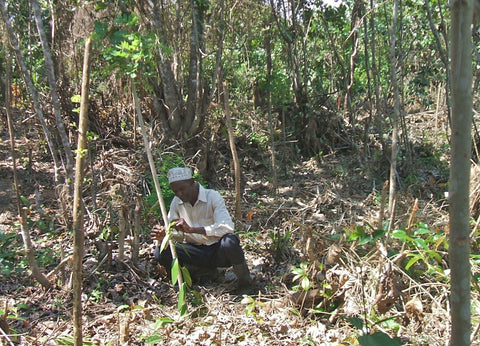
Does Every Vanilla Bean Taste the Same?
This is the greatest benefit of real, pure vanilla extract.
Though each vanilla bean may look similar, the origin of the beans, the soil in which they grow, and how or when the beans are harvested, all contribute to the final taste. Most vanilla beans have more than 300 flavor compounds! When the extract isn't diluted in sugar and water, each of the individual compounds can be experienced.
The origin of the vanilla bean determines its flavor profile. For example, Madascar vanilla beans are traditional, buttery, creamy and rich. Tahitian beans have a rich, cherry-chocolate flavor with a floral aroma. Mexican vanilla beans are rich and smooth with tones of smoke. Tongan vanilla beans have a bold flavor profile. And there are many more.

(Madagascar Vanilla Plantation)
The type of spirit used with each vanilla bean to extract the vanilla flavor is also important. Vodka is the most common extractor. Vodka is preferred for its tasteless profile with a sufficient alcohol level to enhance extraction. Using an aged, white rum adds smoothness, sweetness and enhanced aroma. Bourbon adds a boldness and an aroma that will enhance the taste of your vanilla in creams and homemade ice cream.
Unlike grocery store vanilla extract, Vanilla Pura contains no corn syrup, no artificial flavors and no added sugars. By submerging the vanilla bean in the alcohol for several months, the pure vanilla taste is completely extracted to provide the most enhanced flavor possible. Like a fine wine, the longer the beans are left in the alcohol, the more enhanced the taste becomes.
Where Did Vanilla Originate?
Vanilla is an orchid…an exotic flower, and one of only 4 orchids that bares a fruit. There are three primary vanilla species in the world, all of which originated from modern-day Mexico. They are Vanilla Planifolia (grown primarily today in Madagascar), Vanilla Tahitensis (mostly grown in the South Pacific), and Vanilla Pompona (found primiarly in Central/South America). Most of the world's vanilla today is Vanilla Planifolia or "Bourbon Vanilla" from Madagascar. It is not named after the spirit, Bourbon. It is named after the place of its cultivation: Reunion, (Previously named Bourbon), an island a few hundred miles east of Madagascar. Reunion is the island where the French first brought vanilla to that part of the world for cultivation.
Vanilla beans are grown in tropical regions around the world, where year-round warm temperatures and sufficient rainfall create soil conditions and climate that are suitable for proper growth.

(Vanilla Plant Flower - Reunion, Madagascar)
Vanilla Beans grow within the "Bean Region" - a warm climate zone that is north and south of the equator. Coffee beans, cocoa beans and various other beans all grow within this region. Vanilla Beans, however, are the most sensitive since they are derived from a delicate flour. Severe weather can wipe out a vanilla bean crop for years at a time.
Like many orchids, the Vanilla Planifolia (the vanilla bean orchid) is an epiphyte that lives on a host tree. It’s a vine that grows rapidly up and around an existing tree, but does not draw on the tree’s nutrients. The vanilla orchid can be up to 3 years old before it begins to grow vanilla bean pods. The pods themselves require an additional 9-10 months of growth before they can be harvested.
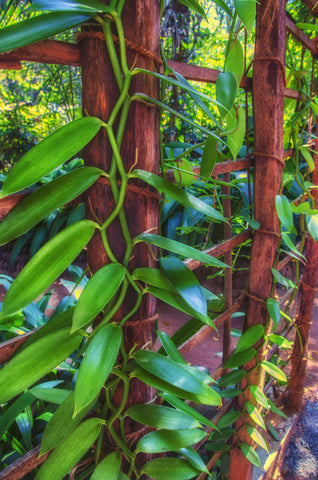
(Sri Lanka Vanilla Plant Growing Up a Plantation Post)
Stages of Vanilla Extract Production
There are 6 stages of vanilla extract production that make up this extended fermentation process. For this process to be successful, it requires moisture and moderate temperatures. As our friends at the Pemba Foundation informed us, "A couple of years ago, some of our new vanilla farmers thought they could speed up the whole process, so they left their pods out in the sun. They got too hot and dry, the fermentation stopped, and the farmers were left with worthless hard black sticks. Pemba sun is very strong, and the pods can stay out for only a few hours each morning."
Here are the 6 stages:
1. Harvesting
- Beans are pulled from the flower. At this phase they are green and odorless, as you can see in this informative video.
- The outer vegetative skin of the bean is killed by soaking it in hot water to keep it from growing further.
- The vanilla pods are exposed to the hot conditions during the day and then wrapped in blankets at night to "sweat" out its inherent flavor and aroma.
- Vanilla beans are laid out into the hot sun all day, and then brought inside at night, until the moisture content in the beans is down to 18%-35%.

- Once dried, vanilla beans are laid out and graded based on their quality, shape and moisture content.
- The dried vanilla beans are split, cut and submerged into alcohol to extract the bean's essential oils, giving us a final product of vanilla extract.
The entire process from planting the vanilla bean through final extraction can require up to four years. Vanilla Extract companies around the world have found ways to "short cut" the proper process in response to high demand and low supply. Though the FDA is working hard to make sure that vanilla extract labeled "pure" really is pure, there are still several loopholes that companies utilize, such as adding sugars, using cheap alcohol and adding synthetic vanillin to enhance the smell and taste of vanilla in the final product.
Why Does the Type of Alcohol Matter?
The type of alcohol used during extraction is a place where "pure vanilla extract" producers can still cut corners. They essentially use "cheap whisky" or "moonshine" to extract their vanilla beans. Vanilla Pura uses only 5x distilled rums and vodkas, as well as bourbon, instead of cheap whiskey.

As the old saying goes, "All bourbon is whiskey, but not all whiskey is bourbon."
Whiskey is made all around the world. There are famous styles, such as American whiskey, Scotch whisky and Irish whiskey. Bourbon is simply the most popular form of American whiskey...but it has its own defining characteristics or rules. They are as follows:
- Bourbon must be made in America
- Bourbon must be 51% corn
- Bourbon must be stored in new, charred-oak barrels
- Bourbon must be distilled to no more than 160 proof, and entered into the barrel at 125 proof.
- Bourbon must be bottled at no less than 80 proof.
- Bourbon must not contain any added flavoring, coloring or additives.
Why are these regulations so strict? Because in the 1800's, distillers spent a lot of effort adulterating, tampering with and diluting their whiskeys. The 1897 Bottle in Bond Act clarified proper bourbon producing techniques. According to the act, "It (bourbon) must be bottled and stored in bonded warehouses under the U.S. government supervision for no less than 4 years." In short, the act made the U.S. government the guarantor of bourbon authentication.
Given the need for alcohol to extract vanilla, many vanilla extract producers are diluting, adulterating and tampering with their alcohol bases today, as American whiskey producers were doing in the 1800's. Not us.

Using Bourbon instead of whiskey ensures adherence to the same high standards with vanilla extract that American bourbon producers do. No short cuts. Only the finest quality. .
Conclusion
To produce real vanilla extract, there are simply no shortcuts. We have traveled the world and have worked hard to import only the finest vanilla beans. We use only the best spirits during the extraction process to ensure that our cookies, cakes, seared proteins, creams, desserts and sauces all contain pure, great tasting, all-natural and real vanilla.
Visit our comprehensive extract-making guide center for more essential extract making tips and ongoing education.

















